Text
May Book Review: Rebel Rising

Star Wars: Rebel Rising
By: Beth Revis @bethrevis
Release Date: May 2nd, 2017
*Beware: Spoilers ahead for Rebel Rising, Rogue One, and Star Wars IV-VII!*
Official Synopsis:
When Jyn Erso is eight years old, her mother is murdered and her father taken from her to serve the Empire. But despite the loss of her parents, she is not completely alone. Saw Gerrera, a man willing to go to any extremes necessary to resist Imperial tyranny, takes her in as his own daughter and gives her not only a home but all the abilities and resources she needs to become a rebel.
Jyn dedicates herself to the cause—and the man. But fighting alongside Saw and his people brings with it danger and the question of just how far Jyn is willing to go as one of Saw’s soldiers. When she faces an unthinkable betrayal that shatters her world, Jyn will have to pull the pieces of herself back together and figure out what she truly believes in…and whom she can really trust.
My Synopsis:
Jyn Erso has lost everything to the Empire—her home, her parents, her freedom. All she has left is Saw Gerrera, a family friend and freedom fighter who claims Jyn as his own and teaches her to fight back against the tyrants who destroyed her life. But Saw’s brand of rebellion isn’t what Jyn expected, and suddenly the only home she’s known for the eight years feels less like home and more like the headquarters for a war Jyn isn’t sure she wants to fight.
When she finds herself on her own again, Jyn must fight to survive the rule of the Empire as well as the dangers of the Rebellion. Intelligent and skilled, she manages to get by until the Empire’s strong arm pushes her into a life she never wanted, forcing Jyn to finally choose: will she keep living just to get by, or will she choose to hope?
My Thoughts:
I’m probably not alone in saying that Rogue One is not my favorite Star Wars movie. I’d even venture to say that upon initial viewing, a lot of people, myself included, decided they didn’t really like the movie.
I know, shun the non-believer.
But honestly, Rogue One felt so empty to me. Who were these people? How did they end up where they were—prison on Wobani, the Rebel base on Yavin 4, the holy city on Jedha? And why should I care about any of them?
Yes, it was sad that everyone died at the end, but those deaths weren’t nearly as impactful as Han’s or even Vader’s death. I’d known these new people for just over two hours, and I had no idea of their history or their motivations or any general reason to actually care about them as characters other than the fact that they’re the good guys and we’re supposed to cheer for the good guys.
Rogue One’s failure is the result of backstory, or more specifically, the lack thereof. We get a vague notion of who Jyn Erso is, but we have no real clue as to why she obviously hates her father, why she’s initially so reluctant to help the Rebellion, or why she knows Saw Gerrera. Sure, we get hints, but nothing is fleshed out, and while I initially thought they may build her character more in another movie on in the TV series Star Wars Rebels, Jyn’s death made it obvious that that wouldn’t be the case. And that left me with my original problem: without any history for Jyn, I didn’t really care what happened to her. I wasn’t in any way interested in her current story, and that made me not care for the movie in which she’s the main character.
And then Rebel Rising was released. I don’t know if a lot of this story was material cut from the movie so it could be released in another format or what, but I do know that Rebel Rising should’ve been released alongside Rogue One. Rebel Rising is Jyn’s story, and it fills in her character so well. This was what I needed to care about Jyn, what would’ve made me care about Rogue One.
Jyn Erso has a rather tragic backstory. We see the beginning of this in Rogue One—her mother killed, her father taken by the Empire—but it’s much sadder than that. Jyn’s pushed to become a fighter, is abandoned again, has her one chance at a normal life destroyed, and is betrayed by the Empire. It’s a depressing journey, but one that Beth Revis writes well.
There’s a very natural progression for Jyn from orphan to rebel-in-training to full-fledged Rebel. Saw trains Jyn to fight as much as because he doesn’t know what else to do with her as to prepare her to help him in the future. For Jyn, it’s something to do, and she doesn’t initially see it as fighting the Empire. Nor does she see her work forging scandocs or Imperial flight codes as any real threat. She’s just helping Saw, the one person she has left in the world, and getting to show off her technical skills. In the early stages, Jyn’s not fully aware of Saw’s missions, so it’s clear she’s helping because she wants to help Saw himself more than to help his cause.
Even once Jyn decides she actively wants to join Saw in his work, she has to prove she’s capable. Jyn makes mistakes, but eventually Saw agrees to let her go on a mission. And while Jyn’s ecstatic to go, she quickly learns that Saw’s form of rebellion isn’t necessarily one she agrees with. She hates the indiscriminate killing, and she can’t bring herself to kill anyone, especially not just because they work for the Empire. These early missions plant the seeds of Jyn’s disillusionment with the Rebellion and especially to Saw’s version of rebellion.
And then Saw pushes Jyn further away from him and his rebellion by abandoning her. Saw had been the person to save Jyn when her parents were gone, and she always believed that he’d be there for her. On top of that belief, Saw promises he’ll return for Jyn, so it’s a further break of Jyn’s trust to realize he’s lying. Now Jyn’s been abandoned by both her father figures, and the girl who had issues trusting people before practically refuses to trust people now.
That changes, however, when Jyn gets the chance to live a normal life. Jyn’s time with Akshaya and Hadder Ponta is fun, and it allows Jyn to relax for the first time in a long time. There’s no training, no spying, no missions to keep her moving, and in the year or so that she’s on Skuhl, Jyn is a normal teenage girl, albeit one with some ace forgery skills. She has a family again, she falls in love for the first time, and she begins to hope that she might have a happy future. But then the Empire arrives, and in a battle against the Rebels, the Pontas are killed. Jyn’s lost everything again, and this time it was the Empire and the Rebellion that took it from her; it’s not unexpected, then, that Jyn ends up hating both sides of the fight, and that’s when she begins to give up.
Everyone she’s ever loved has been killed or has left, and Jyn just doesn’t care anymore. She does jobs for anyone who will pay—including the Empire—just to survive, and although she does occasionally work against the Imperials, it’s to save innocent lives, not because she’s trying to stick it to the Empire. Everything she does is just to get through another day. There’s no joy and no love, and by the time she’s betrayed and thrown into a prison labor camp, Jyn’s essentially lost all hope. After a few months in the camp, there’s no ‘essentially’ about it; Jyn’s hopeless and apathetic, waiting to either die on the job or to be killed on the whim of the Empire.
So when she’s rescued and taken to the Rebels, it’s not a surprise that Jyn’s reluctant to help. The fight between the Rebels and the Empire has destroyed her life, and she’s willing to help only because they’ll let her go free when the mission’s over. But then Jyn sees the hope the Rebels have, the hope that she can help them, and it’s been so long since anyone believed in her. So she makes a choice. She remembers all the terrible things she’s seen the Empire do, all the things she herself has been forced to endure at the hand of the Empire, and she chooses to help. She’s the only one who can help, and the Rebels’ hope in her rekindles a small flicker of hope in Jyn herself, one that burns all the brighter for having been snuffed out. The Rebels are offering her a choice to help right her wrongs or go down trying, and Jyn’s ready to try.
Like I said, Jyn’s journey is truly depressing, but it’s utterly believable, and it ends on a hopeful note. Having seen Rogue One, I know how things turn out for Jyn, but knowing her story showed me that Jyn got the happiest ending she could’ve hoped for. She reconciled with Saw, she saw her father and learned the truth of his decision to leave her years before, she helped the Rebels against the Empire, and she found someone who came back for her, even just to be with her at the very end. Yes, Jyn’s story has a sad ending, but it’s a powerful one; Jyn had faced and overcome so much heartbreak and despair and yet still made the choice to fight, and her retrieval of the Death Star plans gave hope to thousands of people across the galaxy in their fight against the Empire. Because she was able to find hope again when it mattered, she became a beacon of hope to so many others, and her sacrifice helped save the galaxy.
But if you haven’t read Rebel Rising, you don’t see that ending. You just see another group of Rebels sacrificing themselves for the cause, and yes, it’s sad, but it’s rather meh. But now that I’ve watched Rogue One again knowing Jyn’s backstory, the ending kills me. It’s like watching an entirely different movie once all the holes have been filled in—seriously, the number of holes Rebel Rising fills in is pretty astounding. Rebel Rising explains:
Why Jyn pretended her father was dead
Why Jyn was so stunned when they asked her about Saw
Why Jyn wears that scarf
How Jyn learned to fight with truncheons
Why Jyn is so disenchanted with the Rebels
Where Jyn’s nickname ‘Star-dust’ comes from
Why it’s so heartbreaking when Jyn calls Galen ‘Papa’ as he’s dying
Why Jyn fights so hard to get the Rebels to go after the Death Star plans
What it means when Jyn tells Cassian, “I’m not used to people sticking around when things go bad.”
What’s special about Jyn’s necklace
Tell me that knowing the reasoning behind all those points wouldn’t change the way you see Jyn. Tell me that knowing her story wouldn’t change your opinion of her, the one you made based on her cardboard character in the film, the one not even Felicity Jones’s fabulous acting could truly bring to life.
In my opinion, Rebel Rising is required Star Wars reading. It answers so many questions about Rogue One and A New Hope. It also does a wonderful job of showing the growth and the power of the Empire, how it broke people and destroyed worlds and prompted the rise of the Rebellion. Rebel Rising is the backstory of the Rebellion as much as it is the story of Jyn, but it’s Jyn that shows us that tyranny cannot destroy hope, not completely. The tragedy that Jyn faces reminds us that people do terrible things, but it also reminds us that there are always people fighting for what’s right. Jyn Erso chose to be on the side of right, and in doing so, she became one of the most important people in the Star Wars Universe. Thankfully, I had Rebel Rising to show me that.

(Side note: I’ve heard that the novelization for Rogue One fleshes out some points of Jyn’s history. I haven’t read it myself, so I can’t say how thoroughly we get backstory in that novel, but I know it can’t be as extensive as what we see in Rebel Rising.)
Stray Thoughts and Observations:
That dedication! Love it.
This book actually made me sort of like Saw Gerrera. He’s still too far gone on the extremist spectrum for me to ever love him, but his interactions with little Jyn are so sweet. He’s far from a perfect guardian, but he tries so hard, and even once his crazy side really comes out to play, he tries to keep Jyn safe. He goes about it in completely inexplicable ways, but he tries. Seeing that he can actually care makes Saw seem more human, and that makes his reunion with Jyn and his decision to stay behind on Jedha much sadder.
Lyra Erso was so forward thinking and badass. I need more of her story.
I love that Jyn is so technically skilled. Go STEM ladies!
Catalyst by James Luceno should also be required reading. It’s Galen’s story, explaining his research and how he came to work for the Empire before realizing what his research was being used for. It’s a slower read than most Star Wars books, but it fills in more holes. There are flashbacks to scenes in Catalyst in Rebel Rising, and seeing them from two points of view makes them more special. You won’t be missing anything in those scenes for not having read Catalyst, though, no worries.
The legend of the starbird is beautiful.
That pilot from Tamsye Prime is gonna be important at some point, I know it.
Jyn and Hadder got real close real fast, but I can believe it. It’s the first time in years that no one has expected anything from Jyn, and it’s the first time she can relax enough to have real fun. You’re sure to develop some feelings for the person who lets you be free.
Good question, Jyn. How does the Empire keep finding such horrible people? Are people growing more horrible because of the Empire’s influence, or were these people already around and waiting for the chance to use their horribleness to benefit themselves?
Should I know who this blonde admiral is? Her description is very distinct, but I don’t know anyone who matches that profile.
I’m assuming that pilot at the end was Cassian, but was Jyn’s sense of familiarity meant to imply that Cassian was the pilot from Tamsye Prime? Do we know much of his backstory? I’m definitely gonna pretend that they were the same person unless I’m proven otherwise.
Favorite Quotes:
Jyn closed he eyes. She could still hear her father’s voice. Jyn, whatever I do, he’d said, I do it to protect you. And then he had gone with the man who killed Mama.
“The Empire learned how to fight in a war against droids,” he said. “Droids and clones. It helped them to forget that war is about people.”
“I have seen freedom fighters survive in battles against blasters and laser cannons,” he said, not even blinking. “And I have seen rebels take down armies with nothing more than rocks and sticks.”
“Just because you don’t want to hear a truth doesn’t make it less true.”
“If I had known you’d let me join you on missions as soon as I beat up a boy, I’d have done it a long time ago.”
Jyn spent so much of her life hoping she could be different from her father, sometimes she forgot how much she wished she could be half as brave as her mother.
And I choose this, she thought. I choose the stars and peace and you.
“If you were so interested, why didn’t you say anything sooner?” “Because if you didn’t want me, you would break my heart and potentially my body.”
“You never know. Something small and broken really can be powerful.”
#Star wars rebel rising#star wars#rebel rising#beth revis#jyn erso#galen erso#lyra erso#rogue one#rebellion#the galactic empire#rebels#yavin 4#saw gerrera#backstory#required reading#star wars novels#star wars books#hope#rebellions are built on hope#star wars a new hope#death star#jedha#george lucas#scarif#felicity jones#rogue one a star wars story#catalyst a rogue one novel#james luceno#book review#new release
29 notes
·
View notes
Text
Animated Life Lessons #7: Creativity
Creativity (noun) – the ability to transcend traditional ideas, rules, patterns, relationships, or the like, and to create meaningful new ideas, forms, methods, interpretations, etc.


“There’s 104 days of summer vacation…” and Phineas and Ferb shows us how to make the most of them. Phineas and Ferb are brothers with heads full of fun ideas and the engineering skills to bring those ideas to life. Every day brings a new plan—the building of a roller coaster through downtown, a reunion of the band at whose concert their parents shared their first kiss, the transformation of their father into an 80s superstar, or the discovery of Klimpaloon, the magical old-timey bathing suit that lives in the Himalayas—and every plan brings a new set of challenges.

Whether it’s the laws of time and space, disputes within their group of friends and co-conspirators, or the antics of their older sister, Candace, the boys always manage to be creative enough to outsmart the obstacle and ensure another memorable day. As the days pass, the capers and inventions become more and more complex as the boys’ ideas become bigger and bigger, leading to some truly outstanding creations. And as the boys’ plan become bigger, so does Candace’s desire to bust her brothers and get their mother to see their creation. It all comes down to who can be more creative in their endeavors, and this leads to a summer filled with fun, frustration, and family.
Candace’s creativity is turned towards getting her brothers caught and proving that she’s not as silly and high-strung as her antics make her seem. Although her plans aren’t as productive as her brothers’, that doesn’t mean they’re not as elaborate. Candace usually has a multi-step process to get her mom to see the boys’ invention before they disappear, and the crazier the boys’ work, the crazier Candace’s scheme to bust them.
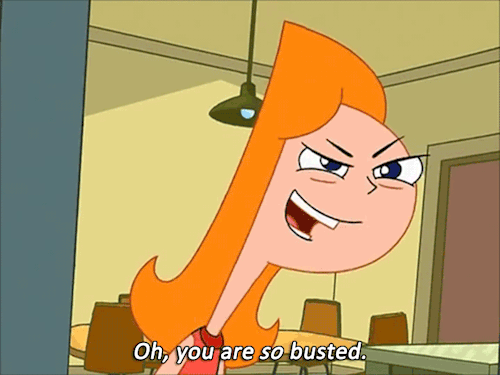
It’s quite fun to watch what Candace an come up with when she puts her mind to it; she’s every bit as inventive as Phineas and Ferb, and her ability to think outside the box helps her accomplish a lot of tasks. Unfortunately, she fails in her busting almost every day, although not for a lack of effort on her part. Outside circumstances, each more unlikely than the next, lead to Candace’s daily defeat, and you can’t help but feel bad for her after all the work she’s put in. It’s when these outside forces threaten those she loves, though, the Candace’s creativity really shines. When she works with her brothers and their friends, the things they can create together are more exciting and successful than what they can do alone. It’s a testament to Candace’s creativity, as well as her determination, that she can improve upon her brothers’ work if called upon, but she can still figure out a way to get them busted while she’s busy doing everything else. If she were ever to fully put all her focus and effort into a task, she’d be a force to be reckoned with.

But while Candace creatively crafty, it’s really Phineas and Ferb whose creative endeavors steal the show. They don’t let anything hold them back from what they want to accomplish—gravity, complexities of time travel, the legality of age when ordering things online—there’s not an obstacle that the pair can’t find a way around or through. They’re only limited by their imaginations, and it’s clear from the things they decide to do every day that that’s not exactly a limiting factor, either.

Whether they’re just designing a day of fun or helping someone in need, Phineas and Ferb find the most creative way to do it, and although there may be easier ways to get the job done, it’s a guarantee that those won’t be as memorable as whatever way the brothers have planned. It’s just as much fun to find out what Phineas and Ferb want to create as it is to see the final product, and that stems from the fact that the things they invent are decidedly unique. There’s no telling where they get most of their ideas from, but their creativity and their ability to actually build or carry out their ideas creates fun for the Tri-State Area—and sometimes the world or even the universe—and the joy they bring to all who experience their work certainly validates their creative spirits and their hard work.



Phineas and Ferb is a show both kids and adults can relate to. Kids will love all the things the brothers build and the antics of the B-storyline, while adults will remember the joy and sense of adventure that came with summer’s freedom from school. There’s really something here for everyone, and, best of all, everyone can agree that Phineas and Ferb are great role models. They take the initiative and they see things through to the end. They’re friendly and polite, and they encourage teamwork and cooperation. They’re safety-conscious and warmhearted, and they have a great sibling relationships and an overall healthy family dynamic.

Most importantly, though, they desire to create, and they never let the opinions or critics or others keep them from creating whatever it is they’ve dreamed up. Phineas and Ferb are out to make the most of their summer vacation, and they’ve found a fun and inventive way to do it. Even if their ideas seem impossible, they know they’ve got the skills and the creativity to accomplish anything.

#phineas and ferb#104 days of summer vacation#disney#candace flynn#phineas and isabella#doctor doofenshmirtz#perry the platypus#danville#tri-state area#animated life lessons#lessons from television#Animated Shows#cartoons for adults#creativity#imagination#inventions#where's perry#brothers#family#fun#summer vacation#summer
15 notes
·
View notes
Text
April Book Review: Walt Disney: An American Original

Walt Disney: An American Original
By: Bob Thomas
Release Date: 1976
Synopsis:
Walt Disney is an American hero--the creator of Mickey Mouse, and a man who changed the face of American culture. After years of research, with the full cooperation of the Disney family and access to private papers and letters, Bob Thomas produced the definitive biography of the man behind the legend--the unschooled cartoonist from Kansas City who went bankrupt on his first movie venture but became the genius who produced unmatched works of animation. Complete with a rare collection of photographs, Bob Thomas' biography is a fascinating and inspirational work that captures the spirit of Walt Disney.
My Thoughts:
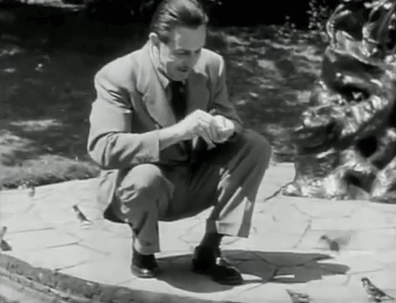
Although I’ve always considered myself a Disney fan, I’ve never really had more than a general knowledge of the man behind it all. Walt Disney: An American Original by Bob Thomas changed that.
Walter Elias Disney was a man unlike any other. His love for animation and entertainment began young, and it never faltered. Growing up, Walt didn’t always have much, but he always had a positive attitude and the determination to get things done. This book provides an excellent look at the good, the bad, and the hard times in Walt’s life, cheering his achievements and never glossing over the bumps in the road.
It begins with a look at Walt’s early life, focusing on his strong bond with his brother, Roy, and discussing his service in World War I and the struggles of establishing himself as a cartoonist. Walt would flit from job to job, always searching for new ways to advance his animation skills or for opportunities to do his own work. Although they were able to establish their own little studio, Walt and Roy were constantly in debt, often unable to pay their employees, and Walt himself even slept in the office and subsisted on cans of chili to cut costs. Walt was willing to make the sacrifices, though, as long as it meant he got to do what he loved, a theme that came up often as he worked his way to the top.
Unfortunately, Walt had as many downs as ups over his first few years as an animator. His first successful character, Oswald the Lucky Rabbit, was technically owned by Universal, and Walt ended up losing the plucky little rabbit, along with many of his animators. Soon after, Ub Iwerks, one of Walt’s closest friends and his main animator, left the studio as well, leaving Walt and Roy to struggle once again to make ends meet. But Walt couldn’t be kept down for long—he knew what he wanted to do, and he did what he needed to get it. He worked harder, played smarter, and relied on Roy to help them succeed, and eventually his restless pursuit paid off in the form of everyone’s favorite mouse.
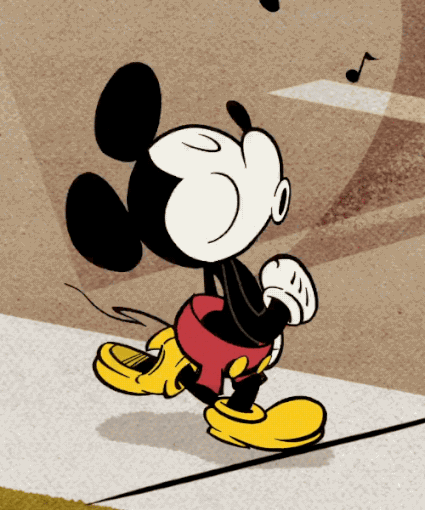
The creation of Mickey Mouse drastically changed the outlook of Walt and Roy’s little company, and although things weren’t always smooth sailing after that, they were certainly moving upwards. The success of Mickey allowed Walt to get more creative with his work. He began to experiment with sound, then color, then mixing live action with cartoons. If a technique or the equipment wasn’t available, Walt invented it, proving his creativity worked in many ways. He was also innovative in terms of education; Walt was interested to teaching new artists and giving them opportunities to work in their field when the economy likely wouldn’t have supported them elsewhere. This helped make his own studio better and also improved animation overall: as workers moved to other studios, their education in animation helped those studios produce better films, which in turn boosted the field of animation overall and helped bring in more viewers to all animated films. It was a brilliant plan that helped animation at every level, and it made Walt happy to foster new talent as best he could.
Walt certainly had an eye for talent, and although his techniques for getting that talent to show itself weren’t always the nicest, he knew what he was doing. Somehow Walt could sense what people were capable of, and he’d push his workers to achieve their best. He frequently grew disappointed in people when they delivered less than their best, and he’d send them off to do it again. Even when his workers did give their best, Walt’s response was lukewarm at best, but that was due to Walt’s general dislike of giving direct praise. He showed his approval through paycheck bonuses or by telling someone else what a great job so-and-so had done, knowing that office gossip would spread his words to the intended recipient. It may have been an odd way to do things, but it worked for Walt, and it worked for his employees, so that was that.
This book also does a fantastic job of showing Walt at work, giving us a look at his daily habits, his interactions with his workers, and even his eccentricities in dealing with bankers, the government, and other studios. The addition of meeting transcripts where Walt would present his ideas for various projects really added to the narrative, and it was fun to see just how Walt’s brain worked. The picture that develops is one of a man who knew his strengths and his weaknesses and who knew handle both. Walt had to have the final word, and he hated to be contradicted, but he knew when his ideas grew too fanciful and didn’t push something that even he realized would be impossible. He tried to know all his employees by name, and he encouraged breaks and fun as long as the work got done by the deadline.
Walt was also well aware that he was the creativity behind Disney, and switching mediums from short cartoons to longer documentaries to feature films and television shows allowed him to stretch that creativity and to tell more stories to a wider audience. These changes, though, wreaked havoc on the company checkbook, and while he was a creative genius, Walt knew he was worthless as a moneyman. Luckily he knew how to delegate financial issues, as well as many other issues that he wasn’t prepared or trained to handle. Walt gave those tasks to people who were better suited to deal with them, and this technique allowed other people, particularly Roy, to have a little control over Walt. It also kept everyone busy, it kept Walt from losing his temper, and it kept things moving forward, which was best for everyone.
This delegation wouldn’t have been possible, though, if Walt hadn’t had such wonderful people supporting him. Thomas is very thorough in showing the relationships between Walt and those closest to him. I really liked the way the push and pull relationship between Walt and Roy was portrayed; they balanced each other out, and while they had their fights, they always made up. In a time when so many sibling partnerships went down in flames, Walt and Roy knew neither of them could succeed without the other, and they worked hard to support each other and to keep each other in line. I also loved the look into Walt’s home life. Lillian seemed like she was the perfect counterpart to Walt, and I loved that she supported his work but also shared her opinion about it. She wasn’t afraid to tell Walt when he was being ridiculous, and I liked that they worked to find compromises instead of continuously fighting over things that one or the other wasn’t willing to budge on. I also appreciated their approach to parenting and how it was very different from that of other big-name Hollywood people of the time. Walt and Lilly raised their two girls themselves rather than hiring nannies and the like to do it, and that showed how much they loved their daughters and how they wanted to have strong relationships with them as they grew into wonderful women.
Ironically, Walt was quite uncomfortable with his relationship with the public. He disliked being seen as a celebrity and would occasionally lie and pretend to be someone else if he was recognized. He also didn’t care to sign autographs in public, but if someone wrote to the studio and requested his autograph that way, he was more than happy to oblige. In public, Walt reasoned, the problem was that everyone would want his autograph, and he didn’t have the time or the desire to deal with all the attention. He also refused to use the celebrity of the Disney name to get by on less-than-perfect cartoons, and he didn’t concern himself with getting special treatment at restaurants and such. Walt saw his celebrity as a rather inconvenient byproduct of his work, and he worked the way he did because he loved what he did, not because he wanted the fame. It was a very different mindset for celebrities, both then and now, and it goes to show yet again how different Walt was from the typical Hollywood star.
The last bit of the book focused on Walt’s final years. Plans for Disney World began, the studio continued to produce feature films, and Walt’s health began to decline. It was so sad to see Walt become less and less able to get around, and although he was still full of brilliant ideas, his attitude had become less jovial and more melancholic. There were a handful of times where he seemed to know that his time was short, but he kept working as long as he could and put on a brave face for his friends, family, and employees.
The scene of Walt’s death brought me to tears, and just reading of the outpouring of grief and sorrow from all across the world broke my heart. It was truly a testament to Walt’s greatness that so many were affected by his passing and also that so many others stepped up to finish his work. Roy’s bravery and dedication really stood out to me; he’d just lost his brother, his partner of almost 50 years, and he chose to forego retirement and time to grieve in order to push forward and finish Disney World, which he had officially name Walt Disney World so that everyone would know who had had the dream of making the park a reality. Walt was able to inspire such loyalty and dedication even after his death, and if that doesn’t show what kind of many he truly was, I don’t know what would.
Walter Elias Disney was a brilliant gag-man, a tireless worker, and a dedicated family man. But more than that, Walt was a visionary, and he had a way of making other people see it. He could create characters and innovations and places no one else could’ve imagined and bring them to life with nothing more than passion. That passion infected others and eventually helped bring Walt’s grand ideas to the world. Walt knew how to tweak old tales and design characters in ways that would touch the hearts of both the young and the old and make them believe in something better. There was truly a bit of magic in Walt’s work, and even more in the man himself, and combined with his spark of imagination, Walt’s big ideas have led to countless memories of joy and laughter and hope for generations of people across the world.
Walt Disney: An American Original gave me an even deeper love for all things Disney, but it also gave me a better understanding and a greater appreciation for the man who was the heart and soul behind the name. Walt Disney was truly one-of-a-kind, and his desire to bring joy to all has ensured that he will never be forgotten.

Stray Thoughts and Observations:
Knowing Mickey was essentially Walt in cartoon form makes him that much more special.
Disney’s animators invented the storyboard.
I had no idea that the army commandeered Disney Studios during World War II.
Disney’s Victory Through Air Power was a major factor in the decision to give the D-Day invasion sufficient air power.
Disneyland was designed as much for adults as for children, so don’t judge me for wanting to go there so badly!
Favorite Quotes:
“When does a person stop being a child? Can you say that a child is ever entirely eliminated from an adult? I believe that the right kind of entertainment can appeal to all persons, young or old.”
“Well, Hazel, let’s face it—love is like everything else; if you don’t have it, you can’t give it.”
“You can’t put a price tag on creativity.”
“You know better than to kill an idea without giving it a chance to live. We set our sights high. That’s why we accomplish so many things.”
“The magic of Walt Disney was larger than life, and the treasures he left will endure to entertain and enlighten worlds to come.”
But what Walt Disney seemed to know was that while there is very little grown-up in a child, there is a lot of child in every grown-up.
#walt disney#walt disney an american original#bob thomas#biography#walter elias disney#history#animation#walt disney animation#walt disney studios#mickey mouse#oswald the lucky rabbit#animated films#walt disney world#disneyland#disney magic#imagination#book review#nonfiction#keep moving forward#you can't top pigs with pigs#ub iwerks#roy disney
15 notes
·
View notes
Text
April 2017 Book Releases
Hello, all you April fools!
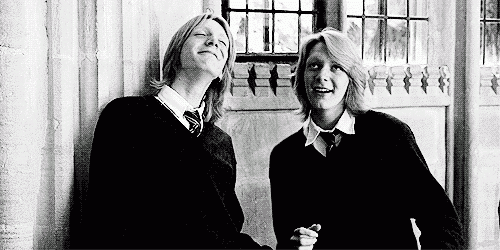
Did any one play any really good tricks this year? Did anyone have any wicked tricks played on them? I live alone, which means I don’t have anyone to play tricks on, but it also means I don’t have to suffer getting tricked.
I’m not really a fan of surprises.
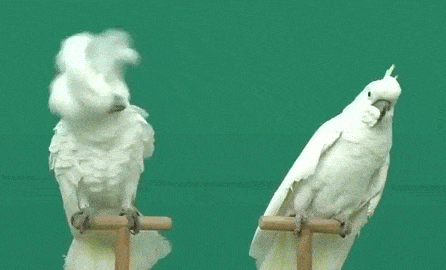
Anywho, I’m reading all nonfiction books this month, which means I don’t get to enjoy any of the wonderful books finding their way into the wild this month. Guess I’ll have to rely on y’all to tell me what you think of these new releases:
Week of April 4th:

Alex, Approximately – Jenn Bennett
Geekerella – Ashley Poston
Defy the Stars – Claudia Gray
Letters to the Lost – Brigid Kemmerer
Gem and Dixie – Sara Zarr
Red Sister (Book of the Ancestor #1) – Mark Lawrence
Zenn Diagram – Wendy Brant
The Football Girl – Thatcher Heldring
Week of April 11th:

Blacksouls (Blackhearts #2) – Nicole Castroman
Alex and Eliza: A Love Story – Melissa de la Cruz
Unearthly Things – Michelle Gagnon
The Freemason’s Daughter – Shelley Sackier
Duels and Deceptions – Cindy Anstey
Fireworks – Katie Cotugno
Literally – Lucy Keating
Given to the Sea (Given Duet #1) – Mindy McGinnis
Week of April 18th:
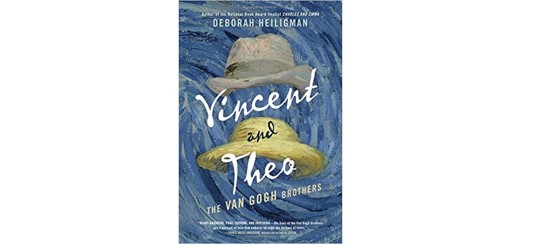
Missing – Kelley Armstrong
Vincent and Theo: The Van Gogh Brothers – Deborah Heiligman
Week of April 25th:

Blade Bound (Chicagoland Vampires #13) – Chloe Neill
Legion (Talon Saga #4) – Julie Kagawa
Champion: The Graphic Novel – Marie Lu
North of Happy – Adi Alsaid
Maud: A Novel Inspired by the Life of L.M. Montgomery – Melanie Fishbane
There you go! Per usual, if you have any books that I missed this month or if you have any upcoming books you want to make sure get on my radar, let me know. Otherwise, happy reading, and enjoy the start of spring!
#book releases#new releases#ya releases#april 2017#alex approximately#jenn bennett#defy the stars#Claudia Gray#blacksouls#nicole castroman#alex and eliza#alexander hamilton#eliza schuyler#melissa de la cruz#missing#kelley armstrong#legion#talon saga#julie kagawa#champion#legend trilogy#graphic novel#Marie Lu#l.m. montgomery#maud#melanie fishbane#spring reading#fiction#young adult#blackhearts
1 note
·
View note
Text
Animated Life Lesson #6: Family
Family (noun) – a basic social unit consisting of parents and their children, considered as a group, whether dwelling together or not

Steven Universe is about a boy being raised by a trio of magical, sentient space rocks as he trains to save the world. Yes, it’s really as bizarre as it sounds, but it’s also brilliant and fun and generally happy, although there’s a dark undercurrent that’s becoming more transparent as the show moves along.
This darkness stems from the fact that the Crystal Gems—the three aliens who are raising Steven—are the self-exiled remnants of a rebellion against their home planet, aptly named Homeworld, and the Diamond Authority. The Homeworld leaders planned to use Earth as an incubation chamber for one of their monstrous creations, a plan that would’ve destroyed the planet and wiped out the entire human race. A rebellion against this plan formed, led by the powerful Rose Quartz, who believed that mankind, with their ability to grow and change, should be left alone. A bitter war followed, and although the Crystal Gems ultimately won, they couldn’t return home, and they instead began new lives on the very planet they had fought to save.

Hundreds of years later, Rose Quartz fell in love and chose to give up her physical form to have a child. That child is Steven, whose half-Gem status imbues him with a plethora of magical abilities. That’s where the other Gems step in, to raise Steven and help him learn how to use his powers while his human father is around to teach him about life in general. What results is an interesting family structure, with Steven’s main upbringing coming from three mother figures.
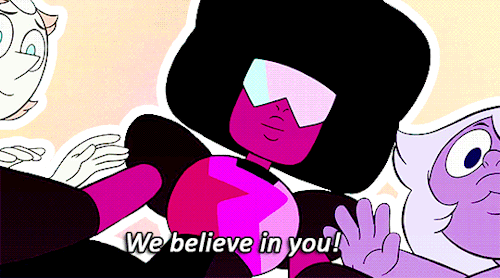
For a cartoon, this image of a family is essentially unheard of. Although live-action television has families that don’t fit the image of a nuclear family, cartoons over the past few decades haven’t been so inclusive. Sure, there are plenty of Disney movies with a single-parent family—typically the heroine being raised by her widower father—but even then, there’s a lack of diversity in the type of family units.
Steven Universe is just the opposite. There are a number of different families living in Beach City. Aside from Steven’s unique familial set-up, there are single mother families, single father families, families with both parents, and multigenerational families. There are small families, large families, families with different races and ethnicities, families by blood, and families by bond. Not every type of family is portrayed, but there’s certainly a wide range, wider than most other shows.



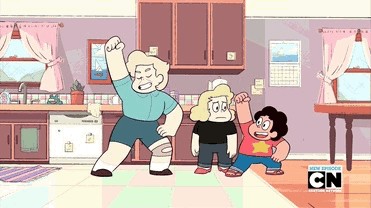
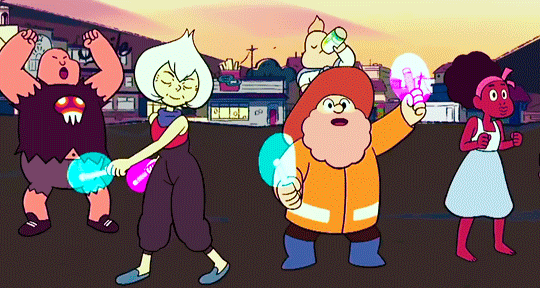
And what this shows us is that there’s not just one type of family. The world is made up of so many different kinds of alternative families, and Steven Universe does a wonderful job of showing that reality within the confines of their little seaside city. There are many things Steven Universe does well—it’s visually beautiful, the music is amazing, and the story is clearly much more complex than we know—but at the heart are the relationships between Steven and the Crystal Gems. Garnet, Amethyst, and Pearl are the only mothers Steven has ever known, and they’re hid best link to his biological mother and the people and values she believed in. They’re his teachers and his friends, and they’re also the best equipped to help Steven fight back against the returning Homeworld threat.
That’s not to say that Steven’s father, Greg, isn’t a supportive and loving parent—because he totally is—but he’s just a human, and there’s only so much he can do against an alien invasion. Likewise for Steven’s friends in Beach City, and it’s Steven’s love for his friends and the other townspeople that pushes him to fight so hard to protect them. He knows that he and his family are the only ones who can save them and their families, and so Steven’s willing to do whatever it takes to save the day.
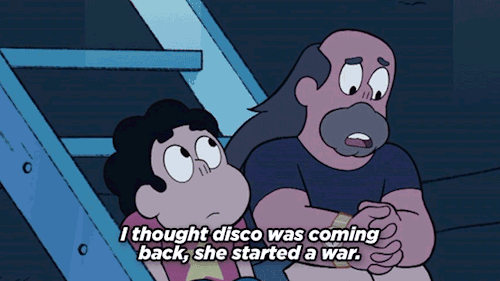
Steven Universe is a science-fiction fantasy show that tackles topics that few other shows are willing to address at all, let alone in such a front and center way. Steven is such a good-hearted and joyful character, but he’s not afraid to ask hard questions or to use his powers against the bad guys. It’s a joy to watch as he grows both as a person and as a hero. And it’s also a joy to see how he makes new friends and expands the circle of people he cares for. Although Steven can be tough and capable of making the hard calls when he needs to, he’s naturally a happy person, and he’s never happier than when he’s spending time with his family.


Together, they face both the good times and the bad; they take the time to play games, to sing together, and to explore, and when things go south, whether due to unforeseen mistakes or to Homeworld threats, they trust one another and work together to make things right. They treat each other like the family they are, even though they’re bound by experiences and beliefs and love rather than blood. Without seeing one another as their family of choice, Steven and the Crystal Gems would never be able to work so well with one another to save the world time and time again. But because of their strong bond, they’re able to fight as one, proving that it doesn’t matter what kind of people make up your family; when you’re facing trouble head-on, your family are the ones standing beside you, whether they’re the same race or gender or even species as you.

#steven universe#crystal gems#rose quarts su#garnet#amethyst#pearl#greg universe#beach city#su homeworld#diamond authority#lapis lazuli#peridot#animated life lessons#lessons from television#animated shows#cartoons for adults#family#we are family#family by blood#sentient space rocks#we are the crystal gems#Cartoon network#steven bomb#connie maheswaran#stevonnie#smoky quartz#nonnuclear family#love
1 note
·
View note
Text
March Book Review: Hunted

Hunted
By: Meagan Spooner
Release Date: March 14, 2017
*Beware: Spoilers Ahead!*
Official Synopsis:
Beauty knows the Beast’s forest in her bones—and in her blood.
She knows that the forest holds secrets and that her father is the only hunter who’s ever come close to discovering them.
But Yeva’s grown up far from her father’s old lodge, raised to be part of the city’s highest caste of aristocrats. Still, she’s never forgotten the feel of a bow in her hands, and she’s spent a lifetime longing for the freedom of the hunt.
So when her father loses his fortune and moves Yeva and her sisters back to the outskirts of town, Yeva is secretly relieved. Out in the wilderness, there’s no pressure to make idle chatter with vapid baronesses…or to submit to marrying a wealthy gentleman.
But Yeva’s father’s misfortune may have cost him his mind, and when he goes missing in the woods, Yeva sets her sights on one prey: the creature he’d been obsessively tracking just before his disappearance.
Deaf to her sisters’ protests, Yeva hunts the strange Beast back into his own territory—a cursed valley, a ruined castle, and a world of creatures Yeva’s heard about only in fairy tales. A world that can bring her ruin—or salvation.
Who will survive: the Beauty, or the Beast?
My Synopsis:
Beauty used to live for the hunt, for the feel of the forest in her bones, in her soul. She used to know the forest’s secrets almost as well as her father, the only hunter who had ever been close to learning the truth of the woods.
Although Yeva left the forest and her nickname behind a long time ago, she yearns for her days in the wilderness. There she can truly be herself, the hunter more comfortable tracking her prey with a bow in her hand than playing the role of an aristocrat or agreeing to marry a man she barely knows.
When her father’s fortune is lost, Yeva gets her wish to return to the forest of her childhood. But her joy may have come at the cost of her father’s sanity, and when he goes missing, it’s up to Yeva to hunt down the creature of her father’s stories, the one he’d claimed was hunting him in his final days.
Leaving her sisters under the care of her eager fiancé, Yeva enters the forest in search of the Beast, but what she discovers is more than she could’ve imagined: an endless winter, a ruined castle, a hidden world of fairy tales come to life, and a man under a terrible curse. A curse that could give Yeva everything she’s ever wanted—or lead to her destruction.
When the magic is cleared, will both be left standing, or will Beauty kill the Beast?
My Thoughts:
Beauty and the Beast is one of my all-time favorite fairy tales. The first movie I ever saw in theaters was the Disney animated version of the film, and although I don’t remember it myself, my mother likes to tell the story of how I, eagerly awaiting the movie and clearly not understanding previews, repeatedly complained, “That’s not Beauty and the Beast” until the film finally started. She also likes to tell how I rather loudly exclaimed, “They wuv each other!” when Belle and the human Beast finally kissed.
Needless to say, Beauty and the Beast was a story that held a special place in my heart from the very beginning, and it remains there to this day. And while I never get tired of watching the animated film or listening to the soundtrack, I’m a reader at heart, so I’m always on the search for a good Beauty and the Beast-related tale. Yes, there’s the original tale, but that’s only so long, and it doesn’t provide that much excitement, so I’ve greedily searched for any and all retellings.
Some people greatly dislike retellings, but I think they’re a great way to explore a fairy tale, a folk tale, or some aspect of mythology in a different context. Retellings can update the story, flesh out the characters, and generally make the story more relevant for current readers. I’ve read a lot of great retellings of Beauty and the Beast over the years, and I’ve loved how different authors can take the same basic story and create such unique and exciting worlds and characters all their own. I’ve encountered a version of Belle who is part cat, a version of the Beast who seems to promise happily ever after until his protective nature forces the heroine to fight for her freedom, and a version of the story tightly twisted with the tale of Little Red Riding Hood. I’ve even fallen in love with a Belle that falls in love with another Beast entirely: Rumpelstiltskin.
But no matter how many times or ways I explored the old French tale, I wanted more. Of course, when I heard Disney was making a live-action remake, I was beyond excited. Every mention of the film had me stifling squeals of delight, and while I was a tad bit afraid Disney would ruin my beloved tale, I should’ve known better.
But this isn’t a review of the movie, although I will say if you haven’t seen it, go. Now. Go see it now. I don’t care what other plans you had, cancel them. This movie is worth every accolade and more.

This is a review of Hunted, one of the newest—and easily one of my favorite—retellings of Beauty and the Beast. I don’t know if the publication of this book was planned to be so close to the release of the new movie, but it was perfect timing for me. As soon as I’d seen the movie, I was in need of more, and Hunted was there to fill the hole with a strong heroine, wonderful world-building, and a healthy dose of Russian folklore to create an entirely new take on this story.
I loved Yeva (AKA Beauty) from the very beginning. It’s quite clear that she doesn’t feel truly comfortable being part of the baroness’s inner circle, and I like that she’s able to make the best of an irritating situation by taking the unwanted window seat, which gives her a view of the forest. Yeva immediately fits the bill for being a ‘funny girl,’ because although she is polite enough, it’s clear that she’s clueless about social dynamics. She has no idea Solmir, the man likely to the baron’s heir, has his eye on her, and I’m glad that it’s firmly established that Yeva’s motives are quite different from the other aristocrats. She isn’t looking to catch a husband, she’s only hoping for opportunities to be herself, whether that means predicting a winter storm to free her from her sewing circle a little early or having dinner discussions about the best way to skin a deer.
But despite Yeva not quite fitting into high society, she’s still quite accomplished in her own way. She’s a skilled hunter, she’s good with dogs, and while she may not be a proficient cook, she knows her way around the kitchen. I love that Yeva is skilled in these areas because these are the things that let her be with those she loved. Her father taught her to hunt, and they’d bonded over their time spend together I the forest. Yeva loved learning from her father and hearing the fairy tales he would tell her, and she grows to be the favorite daughter as a result. Yeva’s relationship with the family dogs grew out of her hunting trips with her father, where the dogs would help them track and flush out prey. Although Pelei and Doe-Eyes are part of the family, they both see Yeva as their favorite, particularly Doe-Eyes. Yeva’s relationship with Doe-Eyes is sweet, and they look after one another not matter what. And finally, it’s working in the kitchen, building the fire and seasoning the bread, that gives Yeva a chance to be with her sisters.
I love the relationship between Yeva and her two older sisters. The sisters in the original story were arrogant and prideful, and they jealously hated Beauty for her sweetness and her good looks. Asenka and Lena could not be more unlike those original sisters. They’re both sweet, loving, and very protective of their littlest sister. They know Yeva is their father’s favorite, but they don’t mind, and they trust one another with their hopes and dreams like sisters should. Asenka in particular is also boundlessly selfless, always putting her sisters’ happiness above her own. It breaks my heart to see her giving up her hope of marrying Solmir when he instead asks for Yeva’s hand, but Asenka would rather have her own heart broken than see her sister suffer. The sisterly love between Yeva, Asenka, and Lena is incredibly heartwarming and so realistically portrayed, and I love that the bond between them grows even tighter when the family is forced to move to their father’s old hunting lodge. The three girls don’t let their misfortune tear them apart; instead they step up and work to make the best of things, knowing that all they have left is each other, and that’s all they really need.
Once they’re back at the hunting lodge, Yeva begins to show more of her true self rather than the façade she had to put up for the people in town. She finds solace in the woods and her hunting, and her desire to provide for her family shows through in ways it never could when she part of the baroness’s court. Her sisters’ protectiveness really shows here, too, as they worry about Yeva being out in the woods by herself, and although they try to find ways to keep her at home, Asenka and Lena know that the forest is where Yeva is truly herself.
Although we see Yeva hunting, it’s not until her father fails to come back from one of his own hunting trips that we really see Yeva’s ferocity. Ignoring her sisters’ pleas to stay, Yeva takes off into the woods, focused only on finding her father and bringing him home. She runs herself ragged following the trail, her worry for her father far greater than her concern for herself. And when she finds her father dead, seemingly at the paws of an impossibly large creature, what little concern Yeva does have for herself flies out the window; all Yeva can think about it revenge, even if it costs her own life to get it. Yeva is far more bloodthirsty than most versions of Beauty, but it perfectly suits her character. She’s a hunter who loves her family more than anything, and when faced with the monster who viciously killed and mutilated her beloved father, of course she’s going to want to take it down.
Anger makes people reckless, though, so it’s really no surprise that Yeva’s plan to kill the Beast doesn’t quite work out. Instead of killing him, Yeva finds herself his prisoner, chained in a cold, dark cell with no chance of being rescued. No chance, that is, until she begins to make friends with a man she believes is also a captive, a man who listens to her stories and tries to make her more comfortable. I love this little twist here; we know that the man Yeva is befriending is actually the Beast himself, and so it’s interesting to see how she begins to open up to him knowing that he will never help her escape. It’s also interesting to see the Beast slowly begin to warm up to Yeva. He gives her what she asks for—to an extent—and he begins to treat her less like a prisoner and more like a friend. When she gets sick, he even moves her to a room in the castle and gives her back her bow and tools so she can make arrows to pass the time. It’s different to see ‘Beauty’ getting along with the Beast so early in the story, but it’s a dishonest relationship, and when Yeva betrays the Beast’s trust and discovers his true identity, that relationship rapidly deteriorates.
It's during this initial portion of Yeva’s captivity that Russian folklore beings to be woven into the otherwise largely-familiar story. I’ve recently been reading more stories involving Russian folktales or reading the folktales themselves, so I was rather excited to recognize many of the stories Yeva shared with the Beast. In the context of the story, the tales had been told to Yeva by her father, and repeating them makes her feel closer to him and also gives her something to focus on besides her situation. But of course, these stories have a larger purpose, and I love getting to see the aspects of these different tales incorporated into Yeva’s journey. For example, the Beast keeps waiting for someone—specifically, a guy—to come and rescue Yeva so that the Beast can use that man to break the curse. Instead, he discovers that it’s Yeva herself that’s a hunter, proving just like Vasilisa that girls can be clever and cunning and capable, even more so than men sometimes. It’s a well-executed blending of fairy tales from different cultures, and I’ve never read a Russian-influenced retelling of Beauty and the Beast, so I was pleasantly surprised to see aspects of Yeva’s story pop up in the narrative.
Once he realizes that Yeva is the hunter he’s been looking for, the Beast begins training Yeva to hunt a different type of prey. The story begins to pick up at this point, with Yeva and the Beast interacting more and more and really feeling each other out. Yeva’s still determined to kill the Beast and avenge her father, but she knows she has to wait for the right opportunity to strike. If she fails to kill the Beast, he’ll kill her and then her family, and Yeva would rather bide her time as a captive than see her sisters hurt. The Beast, on the other hand, starts to become less and less animalistic. Sure, he still hunts like a wolf, and he lashes out like a wild animal, but he begins to speak more, and his treatment of Yeva becomes more friend-like once again. There’s still a lot of animosity between the two, but there are also some moments of genuine kindness and gratitude. I absolutely love that the Beast gives Yeva unrestricted access to his library, which, although far smaller and more personal than the grand library of the Disney films, is still a precious gift. The fact that a love of reading is perhaps the only common thread between all the different versions of Beauty I’ve encountered truly warms my heart. It shows that people of all types, with drastically different backgrounds and interests and dreams, can love books. Stories have the power to change people, as Yeva’s stories have already shown, reaching into not just the mind and the heart, but reaching into the very soul of a person and making them better.
In addition to furthering the relationship between Yeva and the Beast, this training section also greatly expands the world of the story. Yeva explores what’s left of the Beast’s castle, and although she doesn’t find an enchanted rose, she does find clues to the Beast’s past and what happened to him. But it’s really outside the castle that Yeva learns the most. With the Beast’s help, Yeva learns to see the wood hidden within the wood, a world full of magic and fairy tale creatures, including the one that Yeva must hunt to break the Beast’s curse. This is another nice twist, as it opens up an enchanted world that had really been missed up to that point. Without any of the cursed staff that I’m so familiar with around to constantly provide a reminder of the curse, it’s easier to forget that magic really exists in Yeva’s world. Frankly, I like that there isn’t anyone else in the castle, as it allows for more focus on Yeva and the Beast both individually and in their interactions with one another, and this reminder of magic is more subtle and more powerful. It fulfills the sense of wonder that Yeva has always possessed, and it helps her realize that her father hadn’t been crazy, just able to see more than the average person.
It’s worth pointing out that the descriptions of the castle and both the normal and enchanted woods are written quite thoroughly and very straightforward, just as a hunter like Yeva would see them. It’s a much more down-to-earth view of the world, which is exactly what I would expect from Yeva, and it really strengthens her characterization.
As Yeva’s hunting and training skills grow, she knows her chance to kill the Beast is growing closer and closer, and she finally decides the time is right. She sneaks up to the Beast’s room one night, prepared to kill him while he’s sleeping. She’s not prepared, however, to see the Beast as a human, sleeping peacefully and muttering her name, but that’s not enough to stop her from stabbing him in the throat.
And so the Beast dies.
But he doesn’t stay dead. This scene kills me, with the Beast heartbreakingly explaining that he, too, is a prisoner, unable to die and escape his curse. And upon truly understanding the Beast’s plight and seeing his true kindness, Yeva realizes that he didn’t kill her father, and that’s there no way to avenge him.
Heartbroken by her father’s death all over again, Yeva leaves the Beast to return to her sisters. But she finds almost a year has passed and that the hunting lodge stands empty. Yeva eventually tracks her sisters back to their home in town, and their reunion is as heartwarming as the Beast’s quick reversion to the wolf is tragic. I like seeing Yeva back with her family, but it’s clear that, just as in the beginning, it isn’t where she belongs. It doesn’t take long for Yeva to realize that she must return and rescue the Beast, that despite all the initial terribleness, his castle was the only place she doesn’t feel lonely. They’ve both done horrible things to one another, but they’ve both changed, and now while Yeva is free, the Beast is still a prisoner. Yeva plans to leave, only to be stopped by her sisters, who beg her to stay long enough for Asenka’s wedding—to Solmir! —and Yeva agrees.
Unfortunately, that means that by the time Yeva returns to the Beast’s castle, he’s gone. All Yeva finds is the book he was reading the night she stabbed him, the book that gives Yeva the final clue to the Beast’s curse. For inside the book is the lineage of the royal family, including a young prince named Eovan. And marking the page is a feather, not of a guinea fowl as Yeva had originally assumed, but of the Firebird. Yeva realizes that the Beast is the Ivan of her father’s fairy tales, the one who had snatched a single feather from the tail of the Firebird and who had, in his quest to find the rest of the creature, had made friends with a large, magical wolf. The wolf had helped Ivan wiggle out of all consequences—including death—and get everything he’d ever wanted. It was the Firebird who had cursed Eovan and the wolf to become the Beast, one creature with two natures, and so it’s the Firebird that Yeva must kill to break the curse.
The Firebird has been Yeva’s most beloved creature from all her father’s stories, but for Prince Eovan, she sets out to find and kill the bird. She manages to travel as far north as she can go, passing several tests along the way, and eventually finds the Firebird in a cave. Seeing the Firebird, the thing she’s wanted to find her entire life, Yeva almost forgets her mission, but at the last moment, she realizes that the Firebird is now everything she’s always wanted because it’s what will save her Beast. Yeva nocks an arrow and sends it flying straight at the Firebird’s chest.
And the Firebird simply disappears, leaving Yeva trapped in the cave. She manages to start a fire using her bow and her book of fairy tales, but there’s no way out, and Yeva, unbowed up to this point, is just about to give up hope when the Beast arrives. He breaks through the ice wall trapping Yeva, and Yeva is elated…until she realizes that the Beast’s human side is gone, leaving her to face a large, angry wolf ready to pounce. All Yeva can think to do is pull out the Firebird feather, and that stops the Beast long enough for Yeva to begin a story. Yeva tells the Beast his story, hoping to remind him of who he truly is, but she manages instead to realize that Eovan’s true curse was always longing, always wanting more.
And then Yeva realizes that she’s just like Eovan. She was never truly happy just being at home with her family and friends, she wasn’t happy getting to hunt every day, she wasn’t happy with the things and people she already had. Like Eovan, Yeva wanted the Firebird more than anything, but unlike Eovan, she wasn’t cursed to be a beast until the Firebird returned.
The story is enough to bring the Beast back to his human side, but it’s not enough to break the curse. Yeva couldn’t kill the Firebird, and she’s heartbroken that she failed the man with whom she’s fallen in love. But that’s when they both discover the true nature of the curse—that Eovan was cursed to be a Beast until what he wanted most in the entire world came back to him. For so long, that had been the Firebird, but once he met Yeva, she became his true desire, and her return breaks the curse. I love this twist, both because of the fairy tale love and because it’s so realistic. Who hasn’t experienced that feeling of wanting more—more adventure, more happiness, more life? And so many people have felt that longing for something only to realize that what they’d truly been longing for has shifted, usually to something right in front of them, something they’ve had all along. The Beast’s curse belongs to all of us, we’re just punished in different ways for it.
But even centuries-long curses can’t stand up to true love, and Yeva and Eovan find all they want is one another. I can’t tell you how much I love the open-endedness and sheer happiness of the epilogue. I love that Yeva and Eovan leave themselves free to follow their hearts and their longings, never tied to one place for too long, but always together. It’s the perfect plan—or lack thereof—for two people who have never been satisfied with anything or anyone except each other, and it’s full of countless possibilities for them to do as they wish. No matter what they choose, they’ll find magic and love in one another, Beauty and the Beast together at last.
Hunted is a magical retelling of Beauty and the Beast that manages to stand out from the rest. Yeva is a strong and compelling heroine, the paradox of the Beast is wonderfully portrayed, and the true nature of the curse is one we can all relate to. The inclusion of Russian folklore in the world-building and the plot provides a unique twist and another layer of enchantment to the story. Anyone who’s fallen in love—or back in love—with this classic fairy tale because of the new Disney adaptation will love the blend of the familiar and the unexpected in this new take on the story, and everyone will love Yeva as a fierce, capable heroine hoping to find a bit of magic in her world. So get out there and pick up Hunted—just make sure there’s nothing big and hairy lurking behind you as you go.
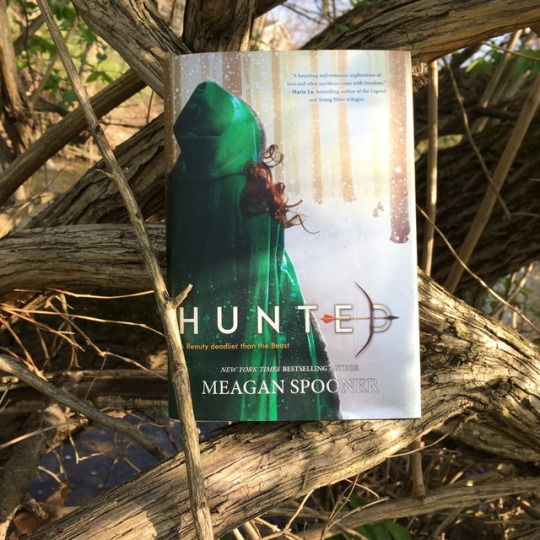
Stray Thoughts & Observations:
I absolutely love this cover. I love the green standing out against the snow, and that tagline is everything.
I felt so bad for Yeva’s father. He was just trying to give his girls the world, and instead lost everything.
I liked the Beast’s chapters. They’re quick, but they provide a good look into the Beast’s thoughts and how they change as he interacts with Beauty.
I’m so glad that Radak didn’t turn out to be a jerk and that he loved Lena enough to want to marry her despite her being poor.
Yeva’s journey to find the Firebird was very myth-like storytelling. It was a bit abstract but still managed to hit all the high points and got Yeva to her goal in a timely fashion.
She’s his Firebird! It’s so cheesy, but so perfect.
Favorite Quotes:
She moves like an animal in a woman’s body. She moves like beauty.
The lust was rising in her, the wild hiss of revenge bubbling up to replace the hunter’s cold reason.
Her father had always told her that no matter the predicament, a hunter should never lie to himself. Only by understanding the problem can one see past it.
In every fairy tale there were rules. Even the monsters could not break them. And where, except in fairy tales, did there exist talking bears?
But wishing is for men. Wanting is what brought us here. Desire and greed are human traits. We are the Beast. And yet…I wish.
Spring had not come to the wood, but it was coming to the Beast’s heart. And at the same time, she hardened her own.
And as if by the same magic that had transformed the Beast, she became nothing more than a little girl who’d lost her father.
…It was the want that screamed to the sky that she’d give everything, all of herself and all she’d ever be, to live one moment of that other life, the one she could not explain, not even to herself.
“But you can be happy about a thing and sad about it at the same time. Feeling one thing in your heart doesn’t stop you from feeling another.”
“He never hurt me. Well, he did once, but to be fair, I had shot him with an arrow and was about to kill him with an axe.”
But if her experience with the Firebird had taught her anything, it was that even here, at the edge of the world, life wasn’t a story.
The prince’s curse wasn’t arrogance or cruelty, as it was so often in fairy tales. His curse was wanting, always wanting. And so was Yeva’s.
In a rush, she blurted, “I would give up a thousand happy endings, just to go back with you to your valley and live as we did. I’d give up every fairy tale I’ve ever known just to hear you say my name again.”
My longing for something else, beyond, into magic and dreams and the things everyone seemed to leave behind as children. For something I knew I could never find. It’s the waiting that brought me here, to her. To another soul as empty as mine, and yet not empty at all, because it’s so full of everything I thought only I ever felt. Her soul against mine feels like music, like heartbeat, like magic. Like beauty.
#hunted#beauty and the beast#meagan spooner#retelling#fairy tale#russian folk tales#vasilisa#the firebird and princess vasilisa#firebird#vasilisa the beautiful#tsarevitch ivan#gray wolf#ivan and the wolf#family#curses#enchantment#magic#book review#young adult#fantasy#disney#beauty#the beast#sisters#sisterly love#hunting#cover love#march 2017 release#yeva#mythology
1 note
·
View note
Text
Trypod: Tackling Podcast Unawareness with My Top 10 Podcasts
This month, NPR asked people to share stories about their favorite podcasts in an effort to encourage others to try listening to podcasts. The effort has been termed ‘trypod,’ which is admittedly clever, but which makes Google really mad when you try to search for more information. Google’s spell-check aside, I wanted to participate and share my top 10 favorite podcasts, the ones that have kept me company on my long drives between Kentucky and Missouri. Maybe you’re looking for a new podcast to try, or maybe you’ve never listened to a podcast and don’t know where to start. Or maybe you’re looking to find someone with weirder listening tastes than you to make you feel a little bit better about yourself.

Whatever the case, I give you the 10 podcasts that have managed to capture my heart and my ears:
Animation Addicts Podcast: I love all things animated, so it was great to find a podcast of other late-20s-year-olds discussing animated films and shows. But better than that, Chelsea, Morgan, and Mason really discuss these films, dissecting the story and the characters, examining the style of the music, arguing about whether the jokes are funny or annoying. It’s fun to recap some of my favorite films and to hear other opinions about them. I also really like that the three share information regarding the history, the context, and the innovations of each film, particularly when Mason, who’s in school for animation, talks about new computer technology, programs, or techniques that were used in making a particular film; even though I don’t always understand all the technicalities, I can appreciate the outcome. The Animation Addicts Podcast is the perfect show for any animation fan, and it’s guaranteed to brighten your day.
The Black Tapes: The Black Tapes is set up as a mockumentary of sorts, one that explores the unsolved and unexplained cases of a famous paranormal researcher. Even though you know this story isn’t real, it’s easy to forget it at times, especially as the cases begin to resemble those horror films that begin with ‘Based on True Events.’ Alex is an interesting and determined lead, and her back and forth relationship with Dr. Strand both as friends and as professionals is fascinating to hear unfold. This podcast may be a bit scary for some listeners, as the cases do sometimes get a bit graphic, but it’s a great podcast to pull you in and keep you listening until you run out of episodes.
Harry Potter and the Sacred Text: As the name suggests, Harry Potter and the Sacred Text examines the Harry Potter books as if they were an actual sacred text a la the Bible. Each episode covers a single chapter of the series, beginning, of course, with the Sorcerer’s Stone, featuring quick recaps of the chapter from the two hosts and then proceeding into a discussion of the characters, events, and important truths found in that section. Eventually the hosts begin to look at each chapter through the lens of a particular theme—with a new theme each week—and it’s fascinating to see what can be revealed about the story when you look it from a new perspective. The chapters are also discussed further using one of a handful of sacred practices designed to deepen the understanding of the chapter. Don’t let the hint of religion push you away from this great podcast. They’re talking about Harry Potter and not any true religious text, but examining these books as if they were sacred will reveal thoughts and feelings that will make you realize all over again just how fantastic a series Harry Potter truly is.
Invisibilia: One of the few NPR podcasts I truly like, Invisibilia examines the unseen forces that impact us as individuals and as part of the human race. These are things like our natural tendency to categorize people and things, the way clothes influence our perceptions and feelings, and the power of societal norms. This is definitely a podcast that makes you think as the hosts present interviews, scientific studies, and personal anecdotes all designed to open your eyes to the invisible factors affecting your life.
Lore: Lore is a podcast that explores tales and folklore from around the world with an eye for telling the true story. Each episode focuses on a different topic, whether that topic is a person (H.H. Holmes, Mary Toft), an event (Salem Witch Trials, the construction of the Hoosac Tunnel), or strange and explainable occurrences (curses, doppelgangers, supernatural creatures). The host presents whatever facts or information is available on the topic in a way that is both informative and intriguing, and I appreciate the obvious amount of research that goes into each episode. I also appreciate that, for the episodes where something explainable is discussed, the host gives evidence for multiple possible explanations, yet he always ends with one final bit of fact that really makes you consider your beliefs on things that exist at the edges of what’s truly known and what could be. Some episodes are spooky, some are horrible, others are simply sad, but they all tell fascinating stories that will leave you wanting to know more.
Sayer: Sayer is a sci-fi/horror podcast with a psychopathic AI that someone decided should be in charge of everything. Set on Typhon, Earth’s new man-made moon, each episode is narrated by Sayer itself as it provides you with information and instructions to help you get along in your new home and job. Unfortunately, terrible and bizarre things happen quite often on Typhon, so you get placed into a tale of new chaos every episode. The storylines seem strange and disconnected until things really get going and you realize everything is in fact part of the same story. It’s likely you’ll end up re-listening to episodes in a new light after new information has been revealed. The story has a great ending if you manage to put all the pieces together, but I will admit to being confused from time to time, so here’s a free bit of information to help clear things up: there are no bees on Typhon.
Serial: I will admit to only having listened to the first season, but that was enough to land Serial on my list of favorites. If you’ve watched Making a Murderer, this story is quite similar, with a young man being convicted of a murder he swears he didn’t commit and a line of evidence that fails to conclusively prove anything. The writers have done a fantastic job of laying out all the evidence and presenting both sides of the story. They make no claims as to the man’s innocence or guilt, but they show that there was enough reasonable doubt to make you wonder how the man ever got convicted. A lot of time and research has been put into making this podcast, and although it’s tough to listen to at times, you’ll want to binge all 12 episodes of season one.
Stuff You Missed in History Class: Educational yet entertaining, Stuff You Missed in History Class is a podcast that cover historical people, events, places, and artifacts that probably didn’t make it into your high school curriculum. There are a wide range of topics, and each episode covers something new, so you’re free to pick and choose what ones to listen to. And there are plenty of episodes to choose from, since this podcast has been running for a while. It’s fun, it’s interesting, and it’s educational in a way that will make you look really smart come trivia night. A must-listen for any history buff or for anyone wanting to know a bit more about the past.
Welcome to Night Vale: You’ve probably heard of this weird little podcast or at least seen it as you scrolled through the most popular podcasts on iTunes—this podcast has been high on the charts since it was first released. Welcome to Night Vale is a community radio show for Night Vale, a little desert town where some really strange stuff happens. No one’s allowed in the dog park except for the hooded figures, the librarians are more likely to eat you than they are to help you find a book, and you’re liable to be late for work because the Faceless Old Woman that Lives in Your Home filled all your shoes with scorpions. And these are just the things that happen on a normal day. Welcome to Night Vale may seem too weird or too ridiculous—and it is more than a bit of both—but it’s also extremely intricate, clever, heartwarming, and truly terrifying. It takes pages out of shows such as The Twilight Zone and Twin Peaks to create a world where things aren’t quite right, but where the people you meet are truly one-of-a-kind. But only because everyone had to kill their double. Wait, you let your double go? And she’s working at Big Rico’s? You’d better hope the City Council never finds out.
Witness: Produced by the BBC, Witness presents interviews from people with firsthand accounts of people, places, and events that changed the world. These interviews span decades and cover a wide variety of topics, and each gives a unique and personal voice to a time past. It’s educational, but still interesting, and once again, there are years of episodes to pick and choose what interests you.
Bonus: Flash Forward: Every episode of Flash Forward begins with a quick trip to the future, where some change in society has altered how our world works. Some of these changes seem more realistic than others, yet each is truly a possible scenario, with some even probable in the near future if technology continues to progress as it has. Upon returning to the present, the host discusses the realities and consequences of that particular imagined future with experts on the topic, ranging from psychologists to scientists to science fiction writers. It’s a very logical game of “What If?” that will sometimes leave you looking forward to the future and other time will make you paranoid of how humanity will screw itself up next.
There you go. My top 10 podcasts plus one extra just because. The next time you need something to listen to, check out one of these podcasts or one of the other thousands of podcasts available now. Whether you’re looking for something that makes you think, something that makes you laugh, or something that makes you cry, there’s a podcast for it.
So try a podcast today. You won’t be disappointed. Happy listening.

#trypod#npr#try a pod#podcast#top ten podcasts#podcast love#podcast unawareness#animation addicts podcast#the black tapes#harry potter and the sacred text#invisibilia#lore#sayer#turkish serials#stuff you missed in history class#Welcome to Night Vale#bbc witness#flash foward#favorites#try a podcast
0 notes
Text
Animated Life Lesson #5: Determination
Determination (noun) - the act of coming to a decision or of fixing or settling a purpose

Gravity Falls is a strange and wonderful show. Set in the titular town, the story follows Dipper and Mabel Pines, 12-year-old twins, as they’re sent to spend the summer with their great uncle. It sounds pretty boring to the twins, until they arrive and find themselves at The Mystery Shack, their Grunkle Stan’s tourist trap house of fake oddities.
As weird as their grunkle is, though, Dipper and Mabel soon discover that there are much stranger and more dangerous things happening in the town: gnomes hiding in the forest, a crazy old man with superior robotic skills living in the dump, a psychic child who’s set his sights on Mabel, a copy machine that can make living copies, and ghosts with a hatred for teenagers haunting an abandoned convenient store.
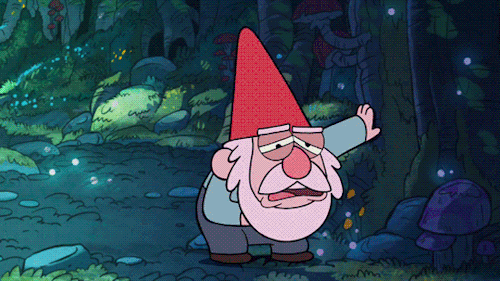
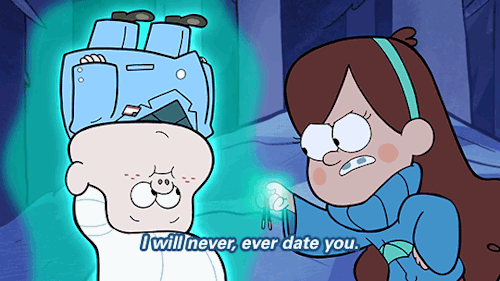
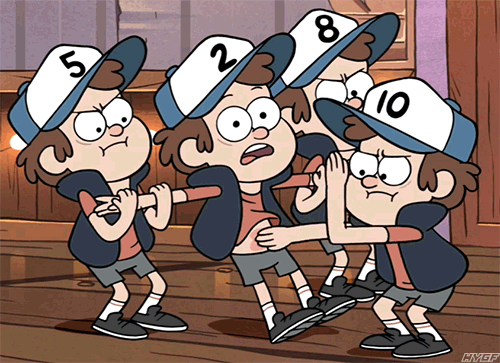

And that’s just the first half dozen or so episodes.
The longer the twins stay in Gravity Falls, the more they realize that all the weirdness it connected to a larger mystery, one which was chronicled in a journal written by the mysterious Author. Dipper makes it his summer goal to figure out just what’s going on, and with the help of his sister and their friends, they embark on a summer-long adventure, determined to solve the mystery of Gravity Falls.
I can easily say that Gravity Falls is not just one of my favorite cartoons, it’s one of my favorite shows ever. The characters, the setting, the crazy stories—it’s all a bit chaotic, but it’s a lot of fun for kids. There’s also a lot of adult humor, courtesy of Grunkle Stan, and a lot of references to everything from movies and video games to anime, boy bands, and Aztec mythology. Everything’s done in good taste, though, keeping the show at a PG rating and allowing everyone to enjoy the show at their own level.
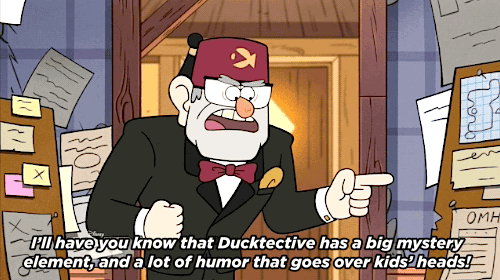
Although there are plenty of admirable traits on display in Gravity Falls—trust, love, curiosity, joy, maturity—one of the best aspects of Dipper, Mabel, and the rest of the characters is their determination. All the characters have their own goal that they’re actively pursuing, but Dipper and Mabel in particular show that they’re willing to go to great lengths to see their desires met. And although this determination borders on pigheadedness from time to time and gets the twins into trouble more often than not, it also helps them succeed.

Dipper is determined to uncover the secrets of Gravity Falls and discover exactly what’s going in the crazy town. Ever since his accidental discovery of the Author’s third journal, Dipper’s set his mind on using the book’s information on strange creatures and anomalies to explain the weird events that pop up on an almost daily basis. And he typically manages to do so, showing off his intelligence and resourcefulness to save the day time and time again. But eventually his drive to find the source of the town’s weirdness leads him to meeting Bill Cipher, a chaos demon with a jaunty bow tie and a penchant for deals.

Bill’s twisted sense of humor means his deals usually work in his favor at the sake of the other party, and when he loses his temper, he’s much more terrifying than his bright yellow pyramid form would suggest. Dipper learns firsthand how tricky and destructive Bill can be, but when the boy needs help cracking a key clue in his search for the Author, he still makes a deal with Bill and ends up possessed. He eventually manages to get his body back, but he almost loses Mabel and the journal in the process.

It’s Dipper’s determination to prove that he can solve the mystery that lands him in his near-death situation, and its Mabel determination to save her brother that saves them all. Dipper realizes that he’s put his goal above the things that are truly important—specifically, his family and friends—and although he still wants to find the Author, he understands that there are things he cares about more than proving his sleuthing abilities.
From then on out, Dipper is determined to succeed on his own terms, and when Bill returns to Gravity Falls with his army to take over the world, Dipper stands his ground and is able to win by relying on himself and those he cares for. Watching Dipper grow from a timid weakling determined to show everyone he can be good at something to a confident leader willing to face down an all-powerful demon is both fun and inspiring, and his journey is a clear example of what you can achieve when you truly set your mind to something.

Unlike her brother, Mabel is determined to spread joy and have fun while she’s doing it. It’s hilarious to see what lengths Mabel will go to in order to show everyone a good time, even if it means jumping feet-first into embarrassing situations. But that’s the thing about Mabel—she doesn’t care what people think about her. She’s confident in who she is and what she believes, and she doesn’t care to waste time on people who don’t like her true self.

That doesn’t mean she won’t go out of her way to help the haters have a good day, though. Whether it’s defacing a car with encouraging graffiti or making everyone wear one of her colorful homemade sweaters, Mabel is totally determined to make people smile. Her boundless energy and joy are infectious, and they make her the perfect counterpart to her more serious brother. But Mabel isn’t totally selfless; when she has the chance to do something that makes her happy, nothing can stop her, not even common sense or safety concerns. Like Dipper, Mabel’s determination harms her almost as much as it helps, landing her and everyone else in awkward or even dangerous situations.

Over the summer, Mabel’s go-for-it attitude gets her her first kiss, but it also pushes her to hold a boy band of clones captive. It wins her a pet pig, but it almost costs her her friends. It helps her befriend her rival, but it also causes her to start the weird apocalypse. Mabel learns that pushing to find happiness—for herself and for others—sometimes has unforeseen consequences, some of which can cause big problems. And in the end, Mabel realizes that there are more important things than being happy all the time. Sometimes it’s sadness or anger or fear that helps you grow, but that’s doesn’t mean you have to push away the happiness. Mabel learns that it’s only by finding a balance of joy and sadness that she can be a better, more mature individual.
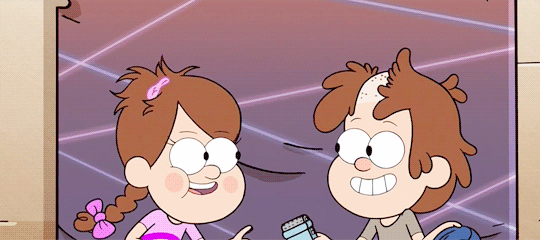
Gravity Falls is a wild paranormal adventure that shows the joys and pains of growing up. Dipper and Mabel have one of the healthiest sibling relationships portrayed on television, and they’re so much fun to watch as they face off against all sorts of strange creatures. Although they may fight now and again, they never lose sight of their love for one another, and in the end, it’s their determination to keep one another safe that keeps them so close after going through so much. They’re the heart of this show, and while the rest of the town and their antics are fun to see, it’s really Dipper and Mabel’s journey from preteens facing an unfamiliar world to teens ready to take on the future that brings everything together. And without their determination—to explore, to enjoy, to grow—they never would’ve become the heroes of Gravity Falls.

#gravity falls#dipper pines#mabel pines#the mystery shack#bill cipher#grunkle stan#grunkle ford#determination#supernatural#weirdmageddon#journal#mystery#siblings#animated life lessons#animated shows#lessons from television#cartoons for adults#wendy corduroy#soos ramirez#unexplained#haunted#creepy#see you next summer#save the world#solve the mystery#parallel dimension#chaos demon#ducktective#twins#gideon gleeful
4 notes
·
View notes
Text
Animated Life Lesson #4: Growing Up
Growing up (verb phrase) - to be or become fully grown; attain mental or physical maturity
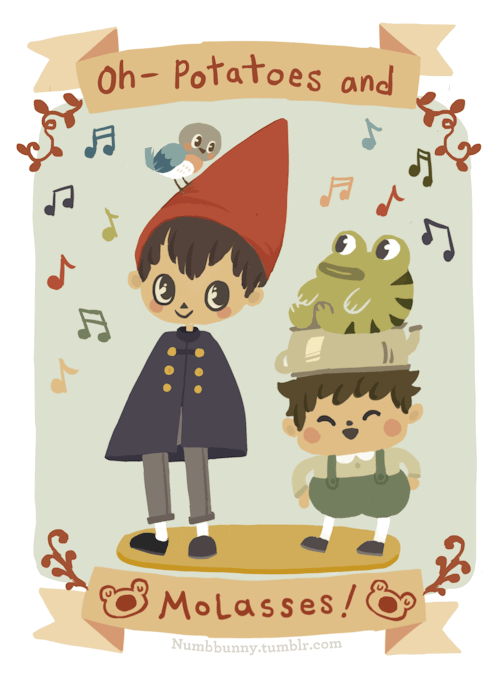
Over the Garden Wall is one of the most bizarre, most brilliant, and most beautiful shows I’ve ever seen. It manages in ten short episodes to convey more whimsy, danger, and dread than many shows do in an entire season, and the plot, while concise, is still wonderfully written.
The story follows half-brothers Wirt and Greg as they travel through a fantastical world trying to find their way home. Along the way, they meet quite the cast of interesting characters, from the elderly Woodsman to the sarcastic bluebird Beatrice to the terrifying Beast.

There’s also a town full of pumpkin-wearing skeletons, a singing frog, a young girl controlled by a magical bell, and an old woman who stuffs wool into peoples’ heads to make them her servants. And all of these characters live in the Unknown, which is almost a character unto itself. Wirt and Greg explore the forest, visit the mansion of a tea baron, ride a ferry full of frogs, and spend a day in a school teaching animals how to read.

If all of that sounds ridiculous, that’s because it is. But underneath all the nonsense and eccentricity is the constant threat of the Beast, an ancient creature who uses trickery and terror to lead souls from their paths, keeping them lost until they give up and begin to transform into the Edelwood trees that the Beast needs to stay alive. Over the Garden Wall is actually quite like a fairy tale from the Brothers Grimm, one that may seem fun and funny on the surface, but is actually quite dark and horrifying when you look a little closer. However, it’s when we look at these deeper aspects that the true lessons of the show begin to appear, mainly lessons on maturity, responsibility, and finding yourself forced to grow up in a world and a place that you don’t understand.

Wirt is the older of the two brothers, and although he may be dressed quite whimsically, he’s actually quite serious. He’s your typical teenager that’s been thrust into a situation he doesn’t like, and his cynicism and stubbornness, while funny at times, end up causing problems for their group from time to time. Wirt is prone to bouts of melancholy, and he’s in that stage of life when most things are embarrassing, and so he keeps a lot of secrets. In fact, trying to avoid embarrassment was what landed him and Greg in the Unknown in the first place, although I’m certain Wirt wouldn’t see it that way. Wirt is also the type of person who doesn’t like to take responsibility for his actions, especially if he can conceivably blame things on his brother. To be fair, it is often Greg’s fault, but it’s Wirt’s responsibility as the older brother to be the mature one in the situation.
Unfortunately, Wirt is initially too unsure of himself to even take advantage of being in charge, as most older siblings are fond of doing. This begins to change, though, as Beatrice pushes him into taking action, whether it’s just to get directions or to play the bassoon to keep them from getting thrown off a ferry full of frogs. Wirt begins to imagine himself as a hero and accordingly begins to act braver. This act only works for a while, though, until Beatrice betrays them, and Wirt beings to give up hope, leaving him open to an attack from the Beast.
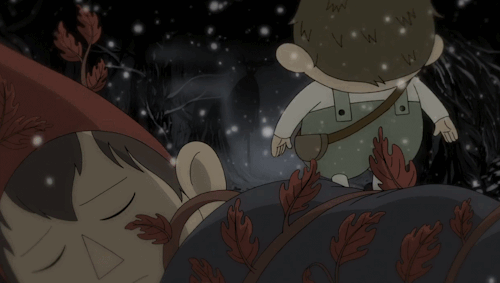
Luckily, Greg is there to save him. Greg acts like you’d expect a younger brother to act: silly, friendly, weird, and mischievous. He wears a teapot on his head, has a pet frog whose name changes countless times throughout the series, stores candy in his pants (not the pockets, mind you; actually in his pants), and enjoys sharing ‘Rock Facts,’ which are false facts he makes up on the spot. But Greg is also brave, thoughtful, and endlessly optimistic, and his weird plans usually work for getting them out of a tight spot. It’s a stark contrast to his older brother, and while Wirt gets annoyed with Greg’s antics, Greg is never too bothered by his brother’s put-downs or stern commands. Greg is the one that keeps things light even as the darkness grows near.

But Greg’s childish fun doesn’t mean he’s not smart; when Wirt decides to stop trying to find their way home, Greg works hard—or dreams hard—to be a good leader. He’s willing to do whatever it takes to save them. When he’s told that Wirt is lost and will never return home, Greg blames himself for being too busy goofing off to notice that Wirt needed his help. Not that Wirt would’ve admitted to needing help, but it’s certainly not Greg’s fault that they’re lost in the Unknown. And when he has the chance to save them, Greg takes it, giving himself up to the Beast in exchange for Wirt’s freedom.
It’s interesting that Greg is the one to first show signs of growing up. He is more than happy to interact with and learn to understand the people of the Unknown, he accepts responsibility for his antics, and he’s willing to face the consequences of his and Wirt’s actions in this strange world. Although he still carries on and goofs off like a young child, Greg is maturing and growing in his own way, and it really shows when he sacrifices himself for his brother’s mistakes. It takes bravery and love to give himself up to the Beast, especially since he has to at least have some idea of how terrible the Beast truly is, yet he is willing to do whatever is necessary to ensure Wirt makes it home.

It’s actually quite sad to think about, yet it’s exactly what Wirt needs to realize that he’s been the one acting like a child. If he hadn’t overreacted in the cemetery, they wouldn’t have landed in the Unknown. If he would’ve waited on the Woodsman, they would’ve had help finding their way from the start. If he would’ve listened to Beatrice, he would’ve known she wasn’t going to betray them. If he would’ve trusted his little brother, he wouldn’t have lost hope and thus lost Greg to the Beast. Wirt realizes it’s all been his fault, and now it’s his responsibility to make things right.
Wirt fights his way through a snowstorm to reach Greg, and when he finds his brother, he apologizes for everything. It’s a big step for Wirt, who hasn’t apologized for anything up to this point, and it’s a sign that he, too, has grown during his time in the Unknown, so much so that he is willing to make his own deal in order to save his brother’s soul. But Wirt is smart, and he sees through the Beast’s trick before both boys are trapped in the woods. With some quick thinking, he manages to free the Woodsman from the duty of the Beast’s lantern, help Beatrice and her family become human again, finish the Beast, and return Greg and himself to their world.
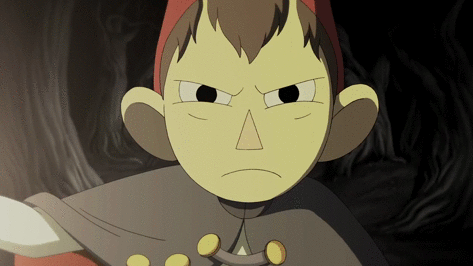
It’s as if Wirt has been saving up all his potential during their journey through the Unknown, and suddenly he has all the bravery and wisdom he needs to help everyone, including himself. If he had had to make a deal with the Beast when they first arrived, Wirt would’ve been too unsure of himself to question the Beast, too afraid to do something wrong, and both he and Greg would’ve ended up trapped forever. But having seen the way the Beast terrorized the inhabitants of the land and how he had hurt Greg, Wirt realizes that it’s his responsibility to help, and so he manages to save the day.
And the lessons they’ve learned in the Unknown aren’t forgotten when they wake up back in the real world. Greg is just as goofy as ever, but I’m sure he would make the choice to sacrifice himself for his brother again, especially now that he knows that Wirt will come to save him. And Wirt’s newfound bravery allows him to talk to Sara, the girl he’s been trying to impress, and invite her over to his house to listen to some tapes. It’s a silly yet sweet ending, and it shows that although Wirt and Greg still have a lot to learn as they grow, their adventures in the Unknown showed them who they truly are and who they may grow to be.
Over the Garden Wall is weird, whimsical, and wonderful. The art of the show is beautiful, evoking an old-timey feel even as the aesthetic changes between episodes. The original songs are fantastic, ranging from hilarious to creepy, and they help to set the mood as the story moves along. The whole atmosphere is that of an almost-recognizable world, one close enough to the real world to seem familiar yet different enough to make you question everything. Wirt and Greg wonderfully represent their respective age groups, yet they don’t come across as stereotypes, and the ways they change over the course of the ten episodes is great to watch. Greg is funny, and Wirt is moody, but they learn to appreciate one another, and it’s heartwarming to watch as their relationship goes from begrudging half-brothers to brothers who are also friends.
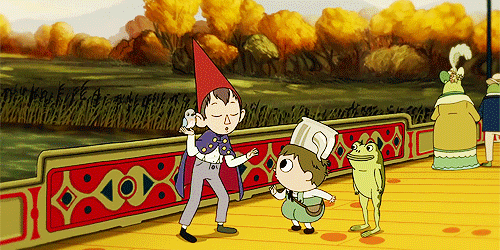
I don’t think I could decide which of them is my favorite, although I have to say I really love Beatrice and the growing up she herself does throughout the story. There’s just something about her sarcasm and older sister-like bossiness that I can really relate to, and I’m sure other adults can relate to her as well. Both adults and kids will love this mini-series, although the things they like about the show are likely to be quite different. But everyone can appreciate the lessons about relying on family, making the best of a bad situation, taking responsibility, and growing up in general that Wirt and Greg learn. It’s a whimsical journey through the Unknown, but it’s one you don’t want to miss.
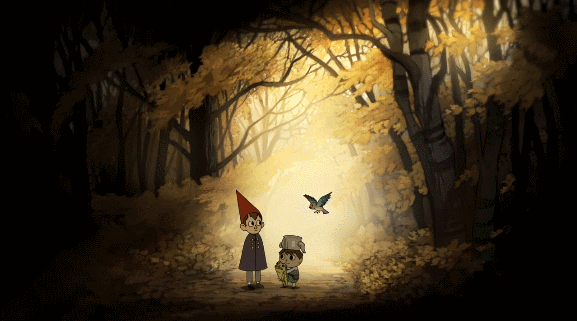
#Over the Garden Wall#greg#wirt#the beast#the unknown#beatrice#bluebird#potatoes and molasses#rock fact#growing up#maturity#edelwood tree#soul stealer#animated life lessons#animated shows#miniseries#cartoon network#old timey#whimsical#into the unknown#lessons from television#brothers#sacrifice#fairytale#grimms fairy tales#otgw#otgw wirt#otgw greg#otgw beatrice#otgw the beast
9 notes
·
View notes
Text
Animated Life Lesson #3: Friendship
Friendship (noun): harmony, accord, understanding, rapport

Miraculous: Tales of Ladybug & Cat Noir is fairly new to television, but it’s already made a big splash. The story, set in the grand city of Paris, follows Marinette Dupain-Cheng and Adrien Agreste, two teenagers who have the ability to transform into the titular Ladybug and Chat Noir to defeat baddies sent after them by the supervillain Hawkmoth. It may seem like your standard Saturday morning cartoon plot, but it manages to be so much more. The villains are fun and interesting, with unique abilities and costumes, the fight scenes are creative and visually appealing, and there’s actually a love square between the two leads.
Yes, this show has upgraded on the dreaded love triangle to a love square, but it actually only contains two people, Marinette and Adrien; the other two ‘people’ are actually their superhero alter-egos, and the resulting relationship drama is less dramatic than it is hopeful and a bit sad. The two really like each other, yet they don’t know it, thanks to typical teenage embarrassment and the age-old rule that secret identities have to be kept secret.
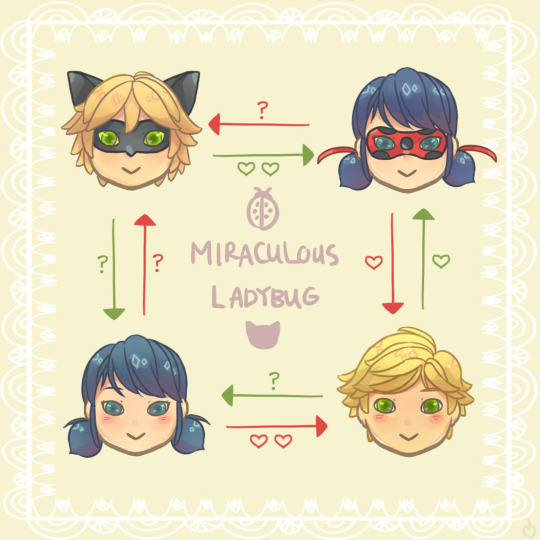
Romantic subplots aside, Miraculous has plenty of other great things to offer. There’s a diverse cast of characters, the animation is well done, and the use of actual locations in and around Paris makes the show seem more realistic. The premise of the akumas and their ability to give powers to people suffering hardship or dealing with conflict is different than the usual powers granted by a chemical spill or other scientific experiment gone wrong. The resulting villains are therefore just everyday Parisian citizens, and none of them are inherently evil, so their vilification at the hands of Hawkmoth elicits some sympathy.
The audience is often reminded of this point in the way that Ladybug and Chat Noir interact with the villain of the week; they know the villain is someone who has been taken advantage of, and while they resort to physical interaction if necessary, the pair prefer to distract the villain and take whatever object is holding his or her akuma, thus freeing them from Hawkmoth’s thrall without having to hurt a sort-of innocent victim.
It's a different take on taking down a villain, even in the world of cartoons. But for Ladybug and Chat Noir, the villains are often their friends and classmates, and even though our heroes could easily take them down with a straightforward assault, they value their friends and their relationships with them too much to hurt them unnecessarily. And the pair are clever enough to save the day without resorting to violence, so they don’t have to worry about their friends getting hurt.
Friendship in general is an important aspect of this show, both because, as I said, many of Marinette and Adrien’s friends are akumatized, meaning the two have to stop their friends from destroying Paris, and because their friendship is integral to their ability to work together.
In their normal life, Marinette likes Adrien, and she’s incapable of hiding it. She blushes, stammers, and literally hides whenever he’s around. But as the show continues, Marinette begins to become more sure of herself, thanks no doubt in part to the confidence the city of Paris has in her abilities as Ladybug, and this allows her to begin to actually converse with Adrien.
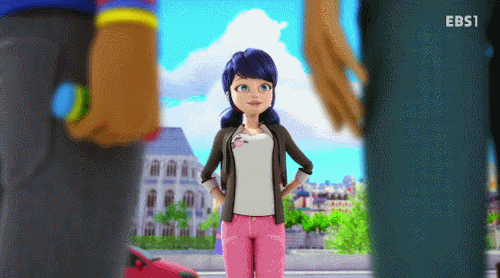
For Adrien, he considers Marinette to be one of his few friends, since years of homeschooling to allow more free time for his modeling career kept him from forming many true friendships.

However, it’s the pair’s friendship as Ladybug and Chat Noir that really shines. The pair did not start out as friends; having just received the ability to transform into their superhero alter-egos, Marinette is horrified at the prospect of having to face down a stone giant, while Adrien is overly excited, rushing in and almost getting himself hurt. Marinette eventually gathers her courage, and although things get worse before they get better, the two manage to stop Stoneheart and return Paris to normal.

As the two continue to defeat Hawkmoth’s akumatized villains, they learn to trust one another, and it soon becomes evident that they wouldn’t be able to effectively save the day without one another. It’s also evident, to the viewer although not to each other, that both Marinette and Adrien are somewhat different as their superhero alter-egos. Marinette is much more confident, unafraid to throw herself into the situation and certain that things will work out. Adrien is much more uninhibited; since no one knows he’s the famous Adrien Agreste, he’s free to let himself have fun, free to joke and flirt and play, free of the constant rules and schedules that rule his normal life. They do say that opposites attract, and that seems to be true for Ladybug and Chat Noir.
Chat Noir may annoy Ladybug sometimes, and Ladybug may be too secretive for Chat Noir’s liking, but the two move from just being teammates to being friends. They enjoy each other’s company, they laugh, and they eventually learn to read each other without having to say anything. And as their friendship grows, so does their success as superheroes. You can work with someone you don’t like and still get the job done, but things work much more smoothly and effectively when you’re in tune and genuinely like working together. For Ladybug and Chat Noir, being friends means they’re able to enjoy being superheroes while they work to save the city.
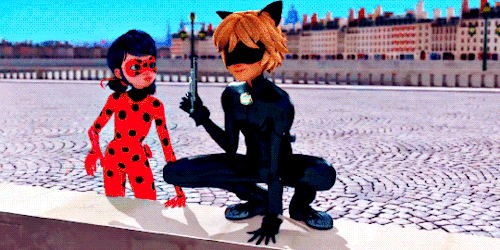
But the friendship between the two superheroes isn’t the only important friendship for either Marinette and Adrien. Their best friends, Alya and Nino, respectively, are both amazing characters and they provide awesome support for their superhero buddies, even if they don’t know about their friends’ crime-fighting.
Alya is the perfect friend for Marinette. She’s encouraging, outgoing, and she’s definitely not afraid to speak her mind. Alya is new to school, and she and Marinette bond over their favorite comic book hero, as well as their mutual dislike of their bossy, spoiled classmate, Chloe. As the school year goes on, Marinette and Alya become inseparable. Although they’re quite different in terms of personality, they’ve totally got each other’s backs.
Alya is always encouraging Marinette in her desire to be a fashion designer, and although she calls Marinette hopeless in regards to her repeated failed attempts to talk to Adrien, she always tries to help Marinette speak to her crush. Even more, Alya’s admiration of and belief in Ladybug helps boosts Marinette’s confidence, even if her friend doesn’t know it. Marinette helps Alya with her blog and backs her up against Chloe, and although Marinette’s moonlighting as Ladybug sometimes causes her to have to leave Alya hanging, Marinette always apologizes and does her best to show Alya how much she appreciates her. The two balance one another, and together, they’re their own force to be reckoned with.

Adrien is also a new kid, and at first he and Nino don’t quite get along, due to Nino’s mistaken belief that Adrien and Chloe are close friends. Nino, who has presumably been going to school with Chloe for a while, knows what kind of person she truly is and believes that Adrien will be just like her. When Nino realizes he’s wrong, he gladly introduces himself to Adrien, offering to be his friend.
Like Marinette and Alya, Adrien and Nino have very different personalities. Whereas Adrien is more reserved and a fairly strict rule-follower, Nino is more relaxed. He’s always trying to get Adrien to lighten up, even though it puts him at odds with Adrien’s father, and he always has a joke or some fun plan to cheer Adrien up when he’s had a bad day. Adrien, on the other hand, does his best to encourage Nino when he’s nervous or stressed, and he does a pretty good job of defusing Nino when the latter is frustrated or angry. Although their friendship is slightly more strained thanks to Mr. Agreste, Nino doesn’t hold it against Adrien, and the two hang out and have fun as often as possible.
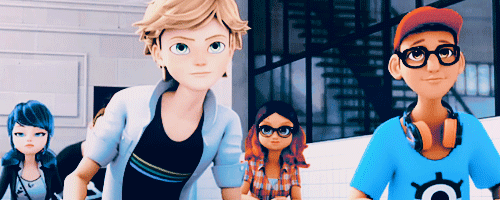
But the importance of friendship and cooperation isn’t just an integral part of the show, it’s part of the making of the show itself. Miraculous is a collaborative effort between animation production studios in France, Japan, and South Korea and is in fact one of five projects that the group has signed on to develop together. It’s unique for a show to be a collaboration between so many different studios and especially in multiple countries, but the teamwork has paid off, and in fact, having so many different companies invested in the show has helped it appeal to such an international fanbase. Even better, having animators in so many different countries has influenced the look and feel of Miraculous, with its magical girl feel and individual transformation sequences a nod to Japanese anime; this balances well with the glamor and flair of Paris coming from the French animators and results in a one-of-a-kind show that appeals to fan all over the world.

Fans of Miraculous: Tales of Ladybug & Cat Noir have already been making a showing at numerous fan events as well as large-scale conventions, and these fans come in every age, shape, and color. It’s clear that Miraculous appeals to children and adults alike, and its family-friendly nature means that parents and their kids can even watch it together. 90s kids will surely enjoy the nostalgia of a well-done superhero cartoon, and everyone can enjoy the message of girl power and the portrayal of wonderful female role models. Marinette and Adrien both show the importance of family, kindness, and doing what’s right in their normal lives, and as superheroes, they show that the day can be saved without violence and that determination and hard work will always pay off. More notably, though, the two, whether as themselves or as superheroes, show that friendships are an important part of life, and that with your friends by your side, anything is possible, and that’s something that everyone can agree on.

#miraculous ladybug#miraculous tales of ladybug and chat noir#ladybug#chat noir#animated life lessons#friendship#lessons from television#paris#superheroes#akuma#hawkmoth#marinette dupain cheng#adrien agreste#ladynoir#marichat#ladrien#adrienette#love square#alya cesaire#nino lahiffe#friends#partners#save the day#zag heroez#zagtoon#thomas astruc#jeremy zag#secret identity#trust#teamwork
104 notes
·
View notes
Text
March 2017 Book Releases
I sometimes forget how short a month February is. It’s only missing a few days, but it seems like one second it’s January and the next it’s March. Kentucky weather certainly doesn’t help either; we had summertime temperatures everyday last week, and I was ready to bust out the flip flops!
And to make things worse, all the stores have had their Easter displays up since Valentine’s Day, so then my brain thinks it should already be April.
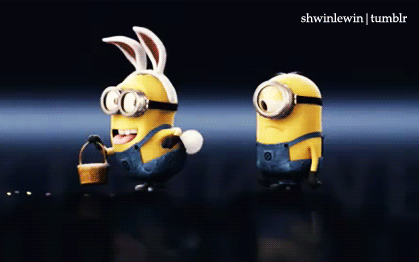
Suffice to say, I didn’t really realize it was a new month until yesterday, which is why this didn’t get posted on the first per usual. Granted, the first round of new releases won’t be out until next week, but I like to be ahead of the game.
And it's not kind of me to have forgotten an entire month, especially since there are so many interesting books being released this month. Frankly, I'm gonna need all 31 days to get in as much reading as possible!
Keep an eye out for these new reads:
Week of March 7:

Traitor to the Throne (Rebel of the Sands #2) – Alwyn Hamilton
The Bone Witch (The Bone Witch #1) – Rin Chupeco
Unfiltered: No Shame, No Regrets, Just Me – Lily Collins
The Great Pursuit (Eurona Duology #2) – Wendy Higgins
Week of March 14:

Bad Blood – Demitiria Lunetta
A Psalm for Lost Girls – Katie Bayerl
Hunted – Meagan Spooner
The End of Oz (Dorothy Must Die #4) – Danielle Paige
Week of March 21:

The Hidden Memory of Objects – Danielle Mages Amato
Hellworld – Tom Leveen
Nemesis (Project Nemesis Series #1) – Brendan Reichs
Week of March 28:

Strange the Dreamer (Strange the Dreamer #1) – Laini Taylor
Blood Rose Rebellion (Blood Rose Rebellion #1) – Rosalyn Eves
A Crown of Wishes (The Star-Touched Queen #2) – Roshani Chokshi
Almost Adulting: All You Need to Know to Get It Together (Sort Of) – Arden Rose
Overturned – Lamar Giles
Hearts and Other Body Parts – Ira Bloom
Bull – David Elliott
What Girls Are Made Of – Elana Arnold
That’s a wrap! Per usual, if you have any books that I missed this month or if you have any upcoming books you want to make sure get on my radar, let me know. Otherwise, happy reading, and take advantage of this month! And don’t feel bad if you get a head start on Easter candy. Somebody has to try out all those new treats, and sugar goes quite well with a good book.
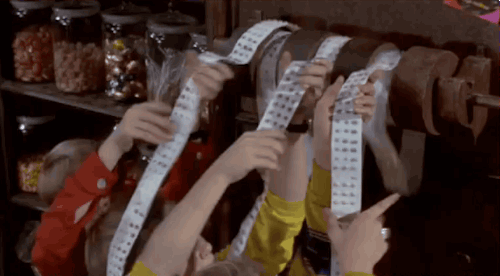
#book releases#new releases#march 2017#ya releases#new books#march releases#traitor to the throne#alwyn hamilton#rebel of the sands#hunted#meagan spooner#beauty and the beast#mythology#fairy tales#the end of oz#dorothy must die#danielle paige#laini taylor#strange the dreamer#rosalyn eves#blood rose rebellion#roshani chokshi#a crown of wishes#the star-touched queen#ira bloom#hearts and other body parts#almost easter#don't forget march#sugar high#books and candy
0 notes
Text
February Book Review: Caraval

Caraval (Caraval #1)
By: Stephanie Garber
Release Date: January 31, 2017
*Beware: Spoilers Ahead!*
Official Synopsis:
Scarlett Dragna has never left the tiny island where she and her sister, Tella, live with their powerful, and cruel, father. Now Scarlett’s father has arranged a marriage for her, and Scarlett thinks her dreams of seeing Caraval—the faraway once-a-year performance where the audience participates in the show—are over.
But this year, Scarlett’s long-dreamt-of invitation finally arrives. With the help of a mysterious sailor, Tella whisks Scarlett away to the show. Only, as soon as they arrive, Tella is kidnapped by Caraval’s mastermind organizer, Legend. It turns out that this season’s Caraval revolves around Tella, and whoever finds her first is the winner.
Scarlett has been told that everything that happens during Caraval is only an elaborate performance. Nevertheless she becomes enmeshed in a game of love, heartbreak, and magic. And whether Caraval is real or not, Scarlett must find Tella before the five nights of the game are over or a dangerous domino effect of consequences will be set off, and her beloved sister will disappear forever.
Welcome, welcome to Caraval…
My Synopsis:
Scarlett Dragna has lived her entire life on the tiny isle of Trisda, fighting to protect her sister, Tella, from their father’s wrath. When an arranged marriage offers an opportunity for both of them to escape, Scarlett jumps at the chance, and in doing so, gives up her dreams of ever visiting Caraval, the magical, mysterious show where the audience is invited to join in the game.
So when Scarlett’s long-awaited invitation arrives, it’s up to Tella, with the help of a sailor who isn’t quite what he seems, to get them to the show. Unfortunately, Tella disappears as soon as they arrive, stolen away by Legend, the magical mastermind behind Caraval. Finding Tella is the goal of this year’s game, and the first one to find her will win the ultimate prize—a single wish.
Scarlett’s been told that the events of Caraval are all part of the performance, but she soon finds herself tangled in a web of secrets, romance, and murder that seems all too real. And even if it’s only a game, Scarlett must find her sister before the end of the fifth night, or she may never see Tella again…
My Thoughts:
When people started making comparisons between Caraval and The Night Circus, I knew I was going to love it. I read The Night Circus last fall, and it immediately became one of my all-time favorites. The characters were complex and charming, the idea of the game was intriguing, and the world-building was beyond compare. Le Cirque des Reves was described so vividly, so thoroughly, that I felt like I was there. There are few books that truly transport me to another place like The Night Circus did, and since then, I’ve been looking for good books related to the circus or to carnivals, hoping to capture a bit of the enchantment woven into Erin Morgenstern’s wondrous novel.
Just seeing the cover of Caraval lit that previous spark of magic I’d been hoping to relight. It sparkled, it sang, and it promised an unforgettable adventure. I know you shouldn’t judge a book by its cover, but I hoped beyond hope that Caraval wouldn’t let me down.
And it certainly didn’t—Caraval was everything I could’ve hoped for. There was a strong and realistic relationship between sisters, the game was high-stakes and required more and more sacrifices from the players, and the world of Caraval was breathtaking in its wonder and its secrets.
Like Le Cirque des Reves, Caraval felt like a character unto itself. It was a cross between the circus in The Night Circus and Wonderland; like the Cirque, there were attractions and performances that defied logic and reason, the players were unique and secretive, and there was a countdown until the end of the show, meaning everyone had a limited time to achieve whatever goal they had set out to accomplish. But at the same time, Caraval felt to me a lot like Wonderland, with its strange rules, constant games, and distorted reality.
To begin with, a visit to Caraval could only be achieved with an invitation. Not just anyone could attend that year’s game, and even those who had been invited wouldn’t be allowed inside if they didn’t make it there before the deadline. Making it there in time was just the first part of the game, giving potential players a taste of what lay ahead. But given the opportunity to experience the magic of Caraval, I could only imagine that those invited would do their darndest to get there in time. Once there, everything was turned upside down. The game was played at night, and anyone who wasn’t safely inside their lodgings at dawn on the first night was immediately disqualified. The rules didn’t say what exactly happened to those who weren’t in their boarding house when dawn broke, but the way the instructions were relayed made me think you wouldn’t have want to find out.
Players were provided with the first clue and a list of instructions for finding the rest of the clues, but how the game was actually played was up to each individual. Trickery, bribery, and thievery were fair game, although the game itself had a way of serving up justice to encourage more honest sportsmanship. However, the honest ways of play could be just as dangerous. Truths were often used as a form of payment, but the secrets confessed could come back to haunt you, so if players preferred to pay with time, that was acceptable, too. Paying with time meant taking days off your life; of course, since no one knows when they’ll die, those days had to be paid instantly, meaning you’d be dead for a few days while the game commenced around you. You’d be revived when your payment had been made, although if something happened to your body while you were indisposed—being buried, being hidden underwater, being damaged in some way—you may wish you hadn’t woken up at all.
Payments aside, the world of Caraval was easy enough to navigate, and there were wonderful things to see. The whole thing was built around a maze of canals, requiring travel by boat if you wished to get anywhere quickly. Or if you were wary of paying to travel on the waterways, you could’ve taken your chances with the bridges and hope they didn’t take you somewhere unexpected. Assuming you could find your way to where you were going, you may have wanted to visit the dress shop, which you could purchase dresses in all colors and styles, or the Carousel of Roses, which you could set to spinning by paying the pipe organist to play you a song. Or perhaps you would’ve preferred to visit the Castillo Maldito, with its assortment of tents and exhibitions where you could examine a menagerie of miniature animals, practice your kissing, or have your fortune told. There was something for everyone at Caraval, but you had to be willing to pay the price for the pleasure.
I found Caraval to be a magical place just this side of insane, and I loved it. I mentioned that I found Caraval a bit similar to Wonderland, and that’s mostly because of the rules. They didn’t make a lot of sense, but they had to be obeyed or there were some pretty harsh consequences. Even though all the players were told—twice—that everything was only a game, that didn’t mean people couldn’t get hurt or even killed. We saw a few instances of people getting too caught up in the game and going mad, and seeing how things played out for the main heroine, Scarlett, it wasn’t hard to see how people could go a bit loopy. And while I think madness or death would be a steep price to pay for visiting Caraval, I’d be willing to risk it.
The descriptions of Caraval, like the descriptions of Le Cirque des Reves, were vivid and thorough. I truly felt as if I had stepped inside this magical place alongside Scarlett, and I loved getting to explore all the nooks and crannies. I loved that even the most seemingly ordinary places were a bit off-kilter, like the rooms in La Serpiente being scattered randomly throughout the floors or the moving bridge, which reminded me of the staircases at Hogwarts. The food and drinks sometimes did more than expected, too, such as the cider that made Scarlett see in black and white, which obviously made me think of Wonderland, although the cider proved to a bit more helpful than a mushroom that lets you change your size. And the shops offered everything from the ordinary to the bizarre, so whether you were looking for a dress or a time-stopping stopwatch, you could find it at Caraval.
Another little piece of magic that I loved were the magical clothes. Scarlett’s dress was a wonder, and I loved that it seemed to have a mind of its own, changing into a skimpy nightgown when it thought she should be flirting. But it also seemed to be attuned to Scarlett’s emotions, making it impossible for her not to face her feelings. It was a nice touch that outwardly manifested Scarlett’s inner turmoil in a unique and beautiful way.
Perhaps my favorite aspect of Caraval and the game, though, was the fact that although everyone was given the same clues, there wasn’t just one way to win. We were told that the clues serve as a map, and that there were many paths to the same destination, so the different clues and how they were interpreted depended on the player. Since we only followed Scarlett through the game, we don’t know how anyone else interpreted the clues, but I like to imagine that other players were successfully making their way through the game by following entirely different sets of clues that only they, with their own unique personality and history, could find. The lesson that there’s more than one way to accomplish the same goal is an important one, but not one that’s often taught in competition stories, so I liked that it was included here.
But of course, the player that we got to tag along with on her way through Caraval was Scarlett Dragna. I loved Scarlett right from the beginning. It was immediately clear that she loved her younger sister, Tella, more than anything, and it would be rather hard to dislike someone who was so willing to sacrifice herself and her happiness to keep her sister safe. Scarlett and Tella couldn’t be more different, but the bond between them was strong, and it hurt to see them fighting with their father to try and save the other from getting beaten. That first chapter was a powerful moment, and it quickly solidified not only how evil their father was, but how far Scarlett and Tella were willing to go to spare the other from his wrath.
At its heart, Caraval was a story about sisters and the love that they share, and I loved that no matter what, Scarlett and Tella fought to protect one another, even if they had different ways of going about it. Scarlett had sworn to keep Tella safe when their mother had left, and Tella refused to let her sister get married to a guy she’d never met just so Tella would be safe from their father. Coming from an older sister, I understood all too well how the situation played out as Tella, the younger sister, came out on top and inevitably got her way. I loved that she arranged to kidnap Scarlett to get her to Caraval, and while Scarlett freaked out as any older sister would when their younger sibling refuses to do the logical thing, she agreed to enter Caraval to find her sister.
Unfortunately, Tella disappeared before Scarlett had a chance to talk to her, and things became even more complicated when Tella became the star of the game, with the first person to find her being granted one wish as their prize. It’s every older sister’s nightmare to have their little sister stuck in some terrible situation, and especially one that she doesn’t know how to solve, but Scarlett refused to let this twist stop her. Although somewhat timidly, she joined the game, more determined than anyone to find Tella and get her home safely.
I loved getting to see Scarlett’s growth as she worked to find her sister. At the beginning of the book, the only thing she wanted out of life was safety for Tella. She was willing to marry a mysterious count that she’d never met simply because he’d promised that he’d bring Tella to live with them and get her away from their father. It didn’t matter to Scarlett that she didn’t truly love the count or that it could be a terrible match because Tella’s protection was worth anything to Scarlett. Being at Caraval didn’t change that, and Scarlett’s initial decisions in the game were made with a disregard for what they may have cost her. That didn’t last long, though, as circumstances forced her to change her strategy, and as Scarlett began to find the answers to the clues, she also became more savvy.
It was great to see Scarlett grow more confident with each passing chapter. Because her sister was the focus of the game, she was able to rely on her knowledge of Tella and use that to her advantage. And as she successfully navigated her way through each clue, her belief in herself became stronger. That didn’t mean she didn’t run into setbacks—there were plenty—but it meant that she was better able to handle them and to avoid making the same mistake twice. Scarlett even eventually became a bit daring, willing to bargain for clues and take chances in a way that she never would’ve done before. Tella was always Scarlett’s top priority, but Scarlett learned that she couldn’t always sacrifice herself for her sister’s sake; sometimes the only way she could take of her sister was by first taking care of herself.
Of course, Scarlett didn’t learn all of that on her own. Her partner, Julian, pushed Scarlett to grow and to want something more than just safety out of life. We first met Julian caught in a fairly compromising scene with Tella, but we soon learned that he had just teamed up with Tella to kidnap Scarlett and take them to Caraval. Initially, I figured Julian was just going to be a flirt and that he’d end up with Tella, but as he and Scarlett began to work together, my opinion of him began to change. Sure, he was still a flirt, and he still lied far too often for my liking, but he was helping rather than hindering Scarlett, and he was gentlemanly enough to keep out when it was Scarlett’s night in their one bed.
However, I found Julian to be far too knowledgeable than I would’ve expected, even if he had been a player before, and I shared Scarlett’s suspicions that he was Legend himself. Luckily, that was wrong, and although he still had a lot of secrets up his sleeve, I found myself really hoping Julian wouldn’t turn out to be a bad guy. He was genuinely concerned for Scarlett’s safety, even trading one day of his life for one of hers, and he was actively helping her solve the clues to win the game. Add that to his annoying yet sweet nickname for her—Crimson—and the romantic tension was undeniable. It wasn’t until Julian said he wasn’t a good guy yet still continued to help Scarlett search for Tella that I connected him to the fortune teller’s prediction of the man Scarlett would marry.
“I am sorry, but the man you will marry is not what you would call good,” the fortune teller told Scarlett. “At one time, perhaps, but he has turned from that path, and it is not yet clear if he will turn back.” If that wasn’t a perfect description of Julian, I don’t know what would’ve been. He had lied and tricked and broken hearts, but there he was, sacrificing his own time and safety to help Scarlett. His feelings for her began to push him back towards the path of goodness, and the changes in him allowed Scarlett herself to open up. She’d been hiding her heart for so long, afraid to fall in love and risk her father’s wrath or losing her heart when the person left, like her mother had done. But as she continued to work alongside Julian, she couldn’t ignore her growing feelings. I was so glad when they finally kissed, and I finally let myself hope that maybe they’d get their happy ending.
And then Scarlett’s father had to show up with her fiancé and turn the search for Tella into an escape for their lives. It wasn’t a very successful escape, and when the two were caught, Scarlett’s father took a knife to Julian’s face. If anyone deserved to be driven mad, it was definitely Governor Dragna, and although he hadn’t changed, his daughter certainly had. Instead of practically throwing herself at his feet to save Julian, Scarlett took a stand, getting the count on her side to save Julian but once again putting herself on the line to save him. But with both Julian and Tella at risk, Scarlett was able to stand up to the count as well, and she left him tied to the bed as she and Julian made their escape. I absolutely loved Scarlett finally showing some backbone, and it could be attributed not only to her love for Julian, but to the growing confidence she’d found in herself as a result of having to deal with all the secrets and chaos of Caraval. It was a defining moment for Scarlett, and certainly made the most of it.
After escaping, Scarlett realized she knew the answer to the final clue, and she and Julian came face to face with Legend. Unfortunately, Legend seemed to have gone a bit mad himself, and he joyfully revealed to Scarlett that Julian had been working for him this whole time. Julian managed to tell Scarlett even though he started out following orders, his feelings for her led him to abandon his task and help her to win. He told her that it wasn’t a game for him, and Scarlett realized that he was telling the truth…right in time for Legend to stab Julian in the chest.
At this point, I was a bit ready to slam the book shut. I read Heartless a week or so ago, and all I could think was, How the heck did I manage to get sucked into another book where (spoiler) the love interest gets murdered? I was not pleased, but then I remembered the wish Scarlett would get if she found Tella, and I had hope again. Until Scarlett found Tella, who—of course—didn’t believe her story about Legend and his revenge against their family. To make things even better, Tella had met Legend; in fact, she was engaged to him, and she thought Scarlett had gone mad when she tried to tell her that her beloved Daniel was the notorious Legend. Then, to make things worse, Scarlett’s father and the count appeared, and Legend revealed his true identity, mocking Tella and her foolish romanticism. The betrayal broke Tella, and before anyone could stop her, she jumped off the balcony to her death.
And once again, I was ready to slam the book shut. Really, Tella? ARE YOU KIDDING ME? Now Scarlett’s going to use her wish to bring you back instead of Julian, and she’ll be glad you’re alive, but she’ll be brokenhearted and you’ll be brokenhearted, and no one will be happy, and this is just a terrible way to end. But of course, that’s not quite how things turned out.
Scarlett stood up to her father and the count once again, threatening to reveal all her father’s secrets unless they left. Her father left, seeming afraid of his daughter and the wrath she could bring down on his head, and while the count left with him, the way he lingered ever so slightly was a promise that he’d be back. That was the least of Scarlett’s problems, though, as she demanded her wish, planning to use it to bring Tella back, only to be told that she didn’t get a wish. I totally had Willy Wonka flashbacks here, but just like poor Charlie Bucket, Scarlett didn’t give up. And although she tried to bring Tella back using her own blood, she failed. I was heartbroken for Scarlett at this point and more than a bit angry—how dare you, book, just how dare you—but then Scarlett was given Tella’s letters, and the truth was revealed.
Scarlett hadn’t been the only sister writing to Legend. Tella was cleverer than anyone had given her credit for, and she’d made her own deal with Legend—the real one, not the player that had been pretending to be him, the one Scarlett had been facing off against—to save herself and Scarlett from their father. Tella knew the only way she could escape without their father searching for her was if he thought she was dead, and with her free from her father’s grasp, Scarlett wouldn’t have to sacrifice herself and her happiness to keep Tella safe. Tella told Legend she was willing to die to save herself and her sister, and she knew that someone—Scarlett—loved her enough to bring her back to life in the end. It took a little extra magic from Legend to do the trick, but Scarlett’s love was in fact powerful enough to bring Tella back from the dead. During the game, Scarlett had proven how much she truly loved her sister, and so Tella made the jump, knowing she could count on her sister.
So yay for that, but that still left Julian dead. Except he wasn’t really dead. Well, he was dead until the game was finished, but then he came back. Frankly, it was a bit contrived, but since I wanted Julian to be alive, I didn’t really care. Apparently Legend’s magic kept the players from being truly killed as long as they were part of the performance, so while the player playing Legend had in fact killed Julian, he was fine. As it turned out, though, Julian had well and truly gone AWOL as he helped Scarlett; he had been meant to leave her almost as soon as they got to the island, but he’d been unable to make himself leave her. It was a consolation to Scarlett that Julian was alive, but she immediately began to question their entire relationship.
So when they came face to face, Scarlett couldn’t let herself trust her feelings, not until Julian revealed his final truth: Legend was his brother. He was ready to give up his life as a performer and join the real world once again until his brother asked him to stay for one last game. Scarlett knew all too well what it was like to be willing to do anything for a sibling, and that was enough to put a crack in her guard. But then she saw the scar on Julian’s cheek, the one made by her father’s knife, and she realized that while he may not have been exactly the person he was during the game, the Julian standing in front of her was still brave and selfless and willing to put himself in danger to save her. It was the safety she’d always longed for, and it was accompanied by a true and unwavering love, and Scarlett made her choice. I was so glad that they did in fact end up together, and I loved the joyous feel of the party as they finally, truly gave their hearts to one another.
It was a lovely ending for Scarlett, and after years of having given herself up to protect Tella, it was nice that this time, she could choose happiness for herself. Scarlett’s journey from a young woman afraid to leave her island home to a young woman who’d heard the future, faced down evil, and brought someone back from the dead was full of all the action, mystery, romance, and magic I could’ve wanted. There were a number of twists in the tale, but Scarlett’s path was straightened in the end, leading her to the one man who encouraged her to be herself and who would always face down danger by her side.
Caraval is a story of personal growth, but it’s also a story about the sacrifices we’re willing to make for the ones we love. More importantly, it’s about the love between sisters, and how with a little magic, that love will save the day no matter what. Caraval explores a world that is wonderfully and brilliantly crafted, with characters you’ll fall in love with and a mystery that will keep you guessing right until the final page. While comparisons between Caraval and The Night Circus aren’t entirely wrong, Caraval certainly stands on its own two feet, and readers will certainly love exploring this new world with Scarlett and Julian. So hurry up and get yourself a copy of Caraval! Just remember, it’s only a game, but even games have their surprises.

Stray Thoughts and Observations:
A seven-year time jump in the first chapter—a unique way to start the story.
Oh, the dichotomy of sisters. The dynamic between Scarlett and Tella is ridiculously realistic.
I liked that Scarlett’s emotions were tied to colors. It’s not explained why, but I found that each description was accurate even if I had never thought of an emotion that way until then. An interesting touch.
I loved Caspar-as-Legend playing him as a dramatic psychopath. It reminded me of Moriarty, and I definitely squealed with delight.
The count will be back. What is it with counts and their evil scheming to get what they want? (I’m looking at you, Count Olaf.)
So did anyone actually die in this book?
Sisterly love saves the day—just like Frozen!
I’m assuming Tella’s letter is from the real Legend? And he knows where their mom is; it’ll be interesting to meet her.
What exactly did Tella offer as payment for this version of the game? Seeing how cunning and determined Tella is, it’s likely to be something big.
Will the next book be from Tella’s POV?
I hope the next book explains more about Legend’s magic and how it works. Because if it can stop people from aging a la Neverland as long as they’re performers, I don’t know why people wouldn’t want to be performers.
I also hope we get to see more of Aiko and learn about the history of Caraval. She was an interesting character, and I want a better look at her journal!
Favorite Quotes:
Whatever you’ve heard about Caraval, it doesn’t compare to the reality. It’s more than just a game or a performance. It’s the closest you’ll ever find to magic in the world.
“Dreams that come true can be beautiful, but they can also turn into nightmares when people won’t wake up.”
Wishes were things of wonder that took a certain amount of faith, and Julian seemed the type to trust only what he saw.
In a place where even the air tasted sweet, she tried to imagine the flavor of someone else’s lips pressed to hers.
“Every person has the power to change their fate if they are brave enough to fight for what they desire more than anything.”
“I think I’ve made a mistake.” “Then make it into something better.”
“Do you always focus on what you’re giving up, rather than what you’ll be gaining? Some things are worth the pursuit regardless of the cost.”
Not quite sure how far she’s already fallen, she imagined loving him would feel like falling in love with darkness, frightening and consuming yet utterly beautiful when the stars came out.
She remembered thinking falling for him would be like falling in love with darkness, but now she imagined he was more like a starry night, the constellations were always there, constant, magnificent guides against the ever-present black.
When she’d kissed Julian, it had felt right. Two people choosing to give tiny vulnerable parts of themselves to each other.
“No need to look at me as if I’ll sneak into your house at night and strangle all your kittens.”
Hope it a powerful thing. Some say it’s a different breed of magic altogether. Elusive, difficult to hold on to. But not much is needed.
“I love you, Tella.” “I know you do…I wouldn’t be here if you didn’t.”
Scarlett wasn’t sure who kissed who first. Their lips were almost touching, then Julian’s soft mouth was crushing hers. It tasted like the moment before night gives birth to morning; it was the end of one thing and the beginning of something else all wrapped up together.
#caraval#stephanie garber#welcome welcome#it's only a game#circus#the night circus#sisters#scarlett dragna#legend#tella dragna#magic#whimsy#wonderland#romance#kidnapping#game#book review#young adult#fantasy#flatiron books#scarlettandtella#ittooksevenyearstogettheletterright#danger#sailor#performance#fallinlove#play the game#julian santos#sisterly love#follow the clues
9 notes
·
View notes
Text
Animated Life Lesson #2: Independence
Independence (noun) - freedom from the control, influence, support, aid, or the like, of others
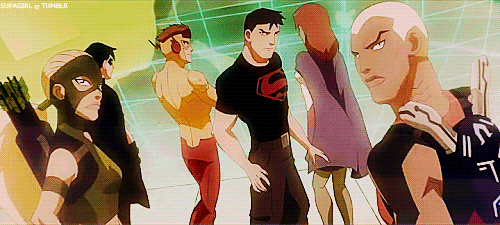
If I were asked to choose, I would say I’m a Marvel girl. I don’t know if it’s just that I’m more familiar with their characters or if I just find their stories more interesting, but if it came down to it, I’d pick Captain America over Superman every time. And while the Marvel movies are generally much better than their DC counterparts, I have to say that the DC television shows certainly hold their own. The live-action shows have fantastic casting and excellent visuals, and they manage to portray complex storylines with both humor and grim reality. But the animated shows are just as wonderful, perhaps even more so because they can relate to both children and adults.
Young Justice is one of these animated DC shows, and although it follows the “sidekicks” of the main Justice League heroes, it shows the true value of independence and explores the fact that sometimes you need teenagers to get the job done.
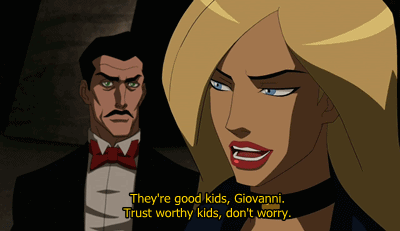
As I said, Young Justice follows a team comprised of the protégées of the main Justice League cast: Robin, Aqualad, Kid Flash, Superboy, Ms. Martian, and Artemis. This core team expands and changes later on, but the point remains that these are the younger counterparts to the better-known heroes. Don’t call them sidekicks, though; just because they haven’t been playing hero as long as their mentors doesn’t mean they can’t hold their own.
And that’s the premise of the show, that these teenagers, with some mentoring and direction from the Justice League, can take on cases that the main League either doesn’t have time for or can’t take because of their fame. In other words, these guys are the B-team, but that doesn’t mean the missions they go on are any less important.
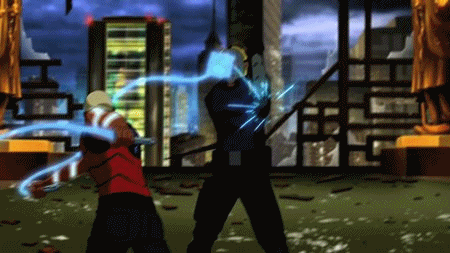
In fact, over the course of the show, The Team, as they come to call themselves, takes on missions that are arguably more important than those of the Justice League. Because they’re working more at the ground level, dealing with problems on Earth—regardless of whether those problems come from Earth or somewhere else—The Team is the first to encounter the Light and uncover their plans for an alien invasion and the eventual overthrow of Earth. And while this is all well and good (it certainly isn’t bad, by any means), The Team isn’t doing all of this just to impress or help out their mentors. For Robin and the rest, the formation of The Team is meant to free them from the shadow of their teachers and further them on the path to becoming full-fledged superheroes.
It’s an interesting story to play out, even though it’s not necessarily unique. Any student wants to become as great as the one they learn from, and working on their own or on a team of their peers allows them to learn new lessons, make mistakes, and grow as a person in ways that continuing to work directly under their teacher could never allow. The difference here is that these students are superheroes, so when they mess up, lives are at stake, and that means that their mistakes are much costlier than the average person’s.
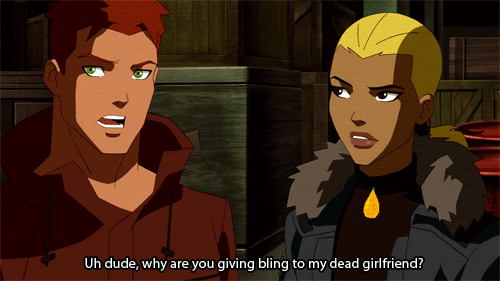
That doesn’t stop them from trying, though, and in trying, the Team learns to work together to achieve their goals. They don’t quite start off as a team, though. It takes a while to learn how to handle their newfound independence from their mentors, and in that time, it becomes clear that independence means different things to the different team members.
For Robin, being out from under the watchful eye of Batman means he can indulge a bit more in his clever antics. While I get the sense that Batman forgives Robin for a lot of things, I also feel like he forgets that Robin is still practically a kid. Of The Team, Robin has the most experience, but he’s the youngest—not counting Superboy and the technicalities of cloning—and being part of his own team makes him realize he doesn’t want to grow up and be just like his mentor. Robin is more free-spirited than Batman, and this really starts to show once he’s part of his own team. There are a number of missions when Robin goes against the plan and disappears to wreak havoc on his own.

Yes, it’s generally effective, but his tactics show the downside of independence, that sometimes too much freedom causes its own problems, especially when you’re meant to be working as part of a team. Batman can take care of himself with or without Robin’s help, so it’s as if Robin doesn’t truly realize how much his new teammates rely on him to have their backs. That’s not to say that he deliberately puts them in danger, but his playful antics frequently put The Team at a disadvantage in terms of sticking to the plan. It’s something that Batman would certainly frown upon—or frown harder upon, since he’s always frowning anyway—but Robin is no longer directly under Batman’s command, and so it’s something his team has to confront him about instead.
And they do, when Robin’s usual independent fighting style puts his team at risk, leading the boy wonder to question his skills as the leader. He hands the reins over to Aqualad with the concession that he’ll return them to Robin when the younger hero decides he’s ready to lead. From there on out, Robin works hard to make the most of his independence from Batman while still realizing that he’s not independent from his team, who truly rely upon his experience and his expert skills to get them out of many tight places.

Aqualad himself clearly appreciates his independence from his mentor and king, Aquaman, but he’s more mature and more used to working directly with someone than his batty friend. As such, he sees the transition from sidekick to hero-in-training as a personal responsibility. Even before he’s officially made leader of the team, Aqualad shoulders the failures and sacrifices of the Team. To him, being independent means that he and the rest of the Team are free to make their own calls in how missions are run, but it also means that there’s no one on hand to save them. If things go wrong—and when you’re trying to save the world, things have a tendency to go very, very wrong—the only people they can blame are themselves, and while they learn from those mistakes, they aren’t free from the consequences. It’s a much different view of the Team’s freedom, and it demonstrates how a different teacher and a few more years of maturity can change a person’s outlook on autonomy.

For M’gann, her excitement isn’t so much for being out from under her uncle as it is to finally be on Earth. She makes the most of her free time to explore and learn more about her new home, and it’s with a childlike joy that she embraces her freedom to be the Earth girl she’s always wanted to be. She thinks being part of The Team is wonderful, and she gets along well with everyone. M’gann still makes mistakes as a hero, but her screw-ups are almost always the result of her failure to clearly understand Earth culture rather than abuse of her newfound independence. But there are occasionally instances where M’gann abuses her independence and uses her Martian powers unchecked, with disastrous consequences that M’gann struggles to fix.

Connor, AKA Superboy, has never had any life before the team, his implanted knowledge aside, and so everything is new for him, including his freedom. Never having known anything else, it’s clear that Connor often isn’t quite sure what to do with himself and his newfound independence; luckily he has M’gann and the rest of his friends to help him learn to live.
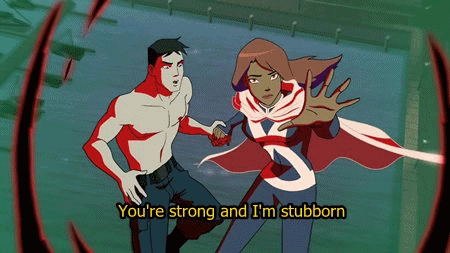
Artemis’s presence on the team is originally under a shroud of dishonesty; although she’s introduced as Green Arrow’s niece, her true training came from her father, Sportsmaster, and her mother, the retired Huntress. Along with her sister, Cheshire, all of Artemis’s family are villains, and although she was brought up and trained in their world, she wanted out. For Artemis, her new independence means getting to be one of the good guys, getting to use the skills her father taught her to take down villains just like him.
It’s a nice twist and a fine taste of justice, and Artemis certainly makes the most of it. And although she enjoys being on the right side of the battle, being a good guy doesn’t come without its problems or its annoyances, the latter mainly in the form of Wally, who is using his freedom to flirt and show off his self-gained speed. It’s not that Wally’s immature, he’s just a free spirit, but when it comes to the mission, he knows how to be serious. It’s only on his own time that he likes to pester Artemis and keep the rest of the team on their toes, and his levity brings humor to most any situation. Even more, when things seem dire, Wally can be depended on to look at the bright side, which is something the Team needs from time to time.

Young Justice manages to bring together a number of DC heroes, each with their own complex story and past, into a strong team. The fact that these guys were the sidekicks just now starting out on their own is a great premise for younger kids and teenagers who are just beginning to take on more responsibility and to learn what it means to be at least somewhat independent from their parents. The Team’s actions both in and out of the field show how different people react when they’re allowed to stretch their wings, and the lessons that they learn about choices, consequences, and what it truly means to be a team are applicable to everyone, whether they’re a superhero or just wish they were one.
And these lessons aren’t just for kids; adults sometimes need reminders that all their choices have consequences and that the easiest choice isn’t always the right one. On top of that, Young Justice manages to incorporate many fan favorites, and the action, the jokes, and the characters themselves will entertain anyone even if they aren’t looking for a deeper meaning. Robin, Aqualad, and the rest of The Team are heroes worth admiring, and even though they aren’t perfect, they always take the initiative to do whatever it takes to get the job done, not just on their own but as a team.

Young Justice Season 3 has been announced! There aren’t too many details currently available, but you can catch up on the first two seasons on Netflix before new episodes are released
#Young Justice#not sidekicks#robin#aqualad#superboy#m'gann m'orzz#kid flash#artemis#independence#justice league#dc comics#dc tv shows#superheroes#animated life lessons#lessons from television#mount justice#sidekicks#save the day#wally west#connor kent#teamwork#project cadmus#batman#aquaman#superman#martian manhunter#the flash#green arrow#wonder woman#autonomy
2 notes
·
View notes
Text
Animated Life Lesson #1: Understanding
Understanding (noun): an agreement regulating joint activity or settling differences; a state of cooperative or mutually tolerant relations between people

In honor of the new season airing on Netflix this week, our first animated life lesson-understanding-will be discussed through its extensive portrayal in Dragons: Race to the Edge.
How to Train Your Dragon and its sequel are some of my favorite movies of all time. The stories are epic, the characters are complex and interesting, and there are a ton of unique and amazing dragons. The world building is fantastic, the animation is well done, and the soundtrack is one I can listen to over and over again. (This one and this one are especially good for keeping me motivated when I’m running.) Furthermore, the themes of friendship, sacrifice, and bravery are all thoroughly explored, giving children and adults alike characters to cheer for as they explore the dangers of their world and come into their roles as dragon riders.
Because I am so in love with the movies, I was ecstatic to learn that there is an animated series for this franchise. DreamWorks Dragons is set between the first and second films and serves as a narrative bridge between the two theatrical releases. The first two seasons, subtitled Riders of Berk and Defenders of Berk, respectively, aired on Cartoon Network, and while these seasons see the discovery of new dragons and new dangers, explore the complications of the new friendship between Vikings and dragons, and establish plenty of new character development, it’s the newest incarnation of the show that really shines, easily on par with the films in terms of story and visuals.
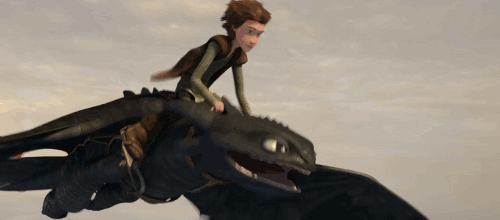
Dragons: Race to the Edge is produced by Netflix, and the fact that Netflix was willing to take it over says something about the greatness of the show and the franchise. Netflix has a good record (at least so far) of producing well-written and entertaining original content, and Race to the Edge is certainly no exception. This newest offering in the series is set just a year before HtTYD 2, and Hiccup, Astrid, and the other riders have certainly changed over the past few years.

But at their core, they remain their same original Viking selves. There was no attempt to drastically redesign any of the main cast—or any of the secondary cast, either—to gain more viewers, and that makes the show feel like a true continuation of the films. Just as importantly, the feelings of friendship between the riders are still intact and still realistic, with the riders spending as much time bickering with one another as they do fighting the true villains. More importantly, though, the friendships between the riders and their dragons are stronger than ever.

Although there are a lot of things to love about these films and the show, the relationship between Hiccup and Toothless is the real heart of this whole story. It’s more than a boy-and-his-dog type of story; Hiccup and Toothless are as close as brothers, with each willing to step into the line of fire to save the other. They’ve saved each other’s lives countless times, and the love between the two of them is beautiful to see. At the risk of sounding cheesy, their relationship is still just as magical as it was at the beginning, when Hiccup chose to defy his entire way of life to save a dangerous dragon and in return earned a lifelong friend. If not for the feeling of sameness—if not for Hiccup being able to understand Toothless’s feelings of fear and helplessness in that pivotal moment—things wouldn’t have changed. Sure, Hiccup would’ve been praised by his tribe, but that would’ve only changed things for him during his time. Instead, his desire to understand dragons changed the lives of every Viking in his tribe for now and for forever. It was Hiccup’s willingness to see things from a different point of view and to try to do things in a new way that changed his entire world and earned him the undying loyalty of one of the world’s fiercest dragons.

Hiccup’s drive to learn about dragons as more than just the enemy was unprecedented for a Viking. All knowledge of dragons up to that point was based on how best to defeat them without getting eaten or burned to a crisp. But Hiccup wanted to understand dragons for the unique and fascinating creatures they truly are. Maybe it was because he was ostracized by his village, maybe it was because he was nosy, maybe it was a bit of both, but Hiccup’s actions demonstrated a maturity and a wisdom beyond his years, and it has certainly turned out well for him.
In RttE, Hiccup continues to encounter new types of dragons, and although his first purpose is always to ensure the dragon’s safety, the second is to learn about the creature. He still hasn’t lost that desire to learn about dragons, and it’s become second nature to study new dragons as thoroughly as possible; this allows Hiccup and the other riders to protect themselves from any potential threats but also allows them to help the dragons to not only survive everything from other dragon attacks to hunters and natural disasters, but to thrive. The riders build structures, relocate threats, and generally care for the dragons they encounter, and in doing so, they continue to see that humans and dragons aren’t all that different.
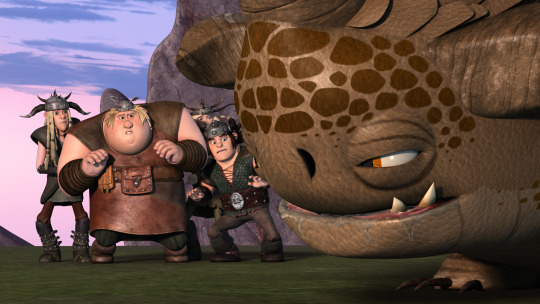
Sure, they’re physically different, and they’re capable of drastically different things, but all they really want out of life is safety and companionship. It’s easy to see these similarities between the riders and their own dragons, but it also becomes apparent as the riders become more accustomed to dealing with wild dragons, who are typically only causing trouble because their home or their loved ones are threatened. It’s interesting that it takes a group of teenagers to understand that dragons aren’t the enemy when generations of Vikings refused to see the truth, and now that same group of teenagers is essentially reinventing the culture. Because of their understanding of the dragons, Hiccup and the other riders have not only cemented their place in Viking history, they’ve managed to create peace after centuries of fighting.
Years of warfare have also created an interesting dynamic within Viking society that calls for another kind of understanding: an understanding of physical disability. Dragon attacks are vicious, and there are numerous Vikings who are shown with missing limbs as a result. Gobber, as an example, is missing both a hand and a leg as the result of battles with dragons, and yet he’s one of their fiercest warriors. Bucket and Mulch are likewise missing hands, yet they’re successful fishers and farmers. Toothless loses part of his tail thanks to his capture at the hands of Hiccup, but once he’s able to fly again with Hiccup’s help, he’s just as dangerous as ever, perhaps even more so because now he has someone to look out for him and help him perform more amazing attacks. And of course, Hiccup himself has lost part of a leg, the price he paid for defeating the Red Death.
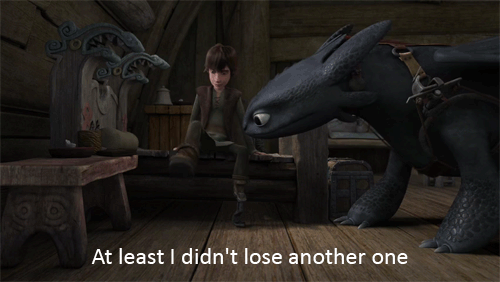
Since Hiccup’s loss comes at the end of the first film, the impact is not well-explored at the time. However, it’s clear that the loss is seen by the other Vikings as a badge of honor, and Hiccup even jokes about being able to redesign a better replacement leg than the one Gobber has made for him. It’s a drastic change from most stories about physical disability, where the loss of a limb or of function is seen as tragic and, to some degree, problematic. But to the Vikings, it’s just a fact of life. Having been injured in a dragon attack is par for the course, and it’s great that these characters get to be ‘normal’ without having to conform to the notions of society. For the Vikings, being disabled is normal, and their society reflects that.

We get to see Hiccup’s reaction to the loss of his leg throughout the seasons of the television show. Not only has he upgraded Gobber’s replacement, he’s specifically designed his leg to work with the attachment on Toothless’s tail, and on top of that, he eventually modifies it to be a multipurpose prosthetic, with the ability to switch between a walking version and a riding version that fits better with Toothless’s tail, as well as a bladed version for walking on ice. Although I’m sure he’s not glad that he lost his leg, Hiccup has been able to use his ingenuity to design a prosthetic that works for him just as well as his real leg ever did. Probably better, in fact, since there are numerous times throughout the show where Hiccup’s metal leg manages to save his life, either directly or through using it as a weapon. Likewise, Gobber has adapted a number of different attachments for his hand, allowing him to switch out tools and weapons to make his work easier. It’s quite fun, actually, to see the different limbs these two can design and create, and it allows them to deal with their missing limbs in ways that are both useful and creative.

Hiccup’s creativity doesn’t just apply to his work, it also applies to how he lives his daily life and how he interacts with his friends. The other riders are all fun and individual characters, even the twins, who are rarely separated, and Hiccup finds creative ways for each of them to utilize their strengths and their hobbies to work as a team. There’s an implicit understanding between each of the riders that they have different strengths and weaknesses, and while they may not always like the reality of their abilities, they always trust Hiccup to lead them in such a way that everyone plays an important role. That doesn’t mean that there isn’t grumbling or teasing about anyone’s abilities. Snotlout in particular spends a fair amount of time making fun of Fishlegs for being a nerd about new dragons, but he’s always (begrudgingly) grateful for Fishlegs’s knowledge when they’re under attack. Snotlout also seems to always find ways to bring up Hiccup’s missing leg, whether it be through bad puns or corrections on comments, such as when Astrid implored the other riders to put themselves in Hiccup’s shoes, to which Snotlout corrected:

Even though it’s annoying, the comments are nothing more than teasing between friends who truly understand and appreciate one another. Everyone realizes that they wouldn’t even be dragon riders without Hiccup, just as everyone realizes that they wouldn’t have become such successful riders if they weren’t able to look past each other’s differences and learn to work as a team. There’s an understanding that even though they may irritate, aggravate, and enrage one another from time to time, they’re still a team, and they couldn’t do all the amazing and helpful things they do if they didn’t have each other. It’s being able to understand that everyone has their flaws just as they have their gifts that allows the riders to function so well together and be the people who save both humans and dragons.
Dragons: Race to the Edge is easily one of the best animated shows offered today. There’s enough stupid humor, exciting dragons, and amazing flight scenes to keep children interested, while adults will enjoy the deeper themes and messages along with the exciting dragons and amazing flight scenes. This show, along with the other seasons of Dragons serve as the perfect bridge between the first and second films, seamlessly continuing the story and introducing new characters and dragons that let us explore the world more than the movies would allow. As I mentioned before, the show is great from a visual standpoint, as close to the films as any television show I’ve ever seen, and the score manages to incorporate the main themes from the film while also introducing lovely new pieces. What’s more, much of the main cast lent their voices to the show, including Jay Baruchel as Hiccup and America Ferrera as Astrid, which further lends to the authenticity of the series. But it’s truly the fact that the show has managed to capture the truly capture the relationship between Hiccup and Toothless, that undefinable understanding between a boy and his dragon, that makes the series as successful as the films. There may be new adventures, new enemies, and new friends, but it’s this connection at the core of the story that makes it perfect.

Check out season 4 of Dragons: Race to the Edge, premiering on Netflix this Friday!
#how to train your dragon#how to train your dragon 2#dragons race to the edge#dragons riders of berk#dragons defenders of berk#dragons#dragon riders#hiccup#toothless#night fury#astrid#stormfly#berk#vikings#a boy and his dragon#understanding#animated life lessons#lessons from television#tuffnut#ruffnut#barf and belch#fishlegs#meatlug#snotlout#hookfang#saving people#riding dragons#this is berk#disability#cooperation
10 notes
·
View notes
Text
Animated Life Lessons Series
I recently posted a piece about magical girl animes and the fact that they don’t get the appreciation they truly deserve. For all the important lessons on friendship, teamwork, and girl power they present, they get written off because of their ‘girly’ status.
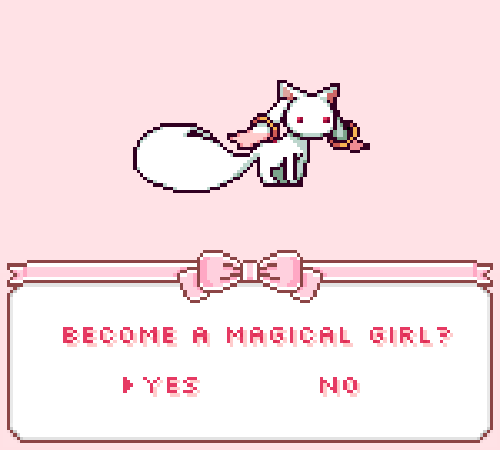
Unfortunately, magical girl animes aren’t the only shows getting written off because of a mistaken stereotype. Taking a step back, animation in general is judged as being for children. Cartoons or anime, 2D or 3D, comedy or action or drama, hand-drawn or CGI or claymation—the format doesn’t seem to matter, as they’re all largely lumped together into a box labeled ‘Kid Shows,’ and enjoyment of these shows by anyone over the age of 20 is likely to be frowned upon.

But as I pointed out in my magical girls post, there are so many things to be learned from ‘children’s’ shows, regardless of age, gender, race, or anything else. There are so many animated shows that tackle interesting subjects and tough situations, and the lessons the characters learn are ones that many people--especially in this day and age—need to be reminded of or learn in the first place.
I will be the first to admit that I watch a lot of cartoons. Aside from the reasons I’ve already given, I find animated shows to be more enjoyable than the fifty thousand cop dramas, hospital dramas, bad comedies, unwanted reboots, or ridiculous reality shows that make up the majority of primetime television. I adjusted my cable service when I realized I watched only a handful of channels, and then I ditched it all together when I realized just how many great animated shows are offered on Netflix, Hulu, and other various streaming services.
I’m not trying to sell you on cutting the cord, but I want to make the point that I watch a lot of cartoons and anime. And I’m probably not the type of person you would expect to watch kid’s shows: I’m a 27-year-old female with two Master’s degrees under my belt and a PhD in progress. Not exactly the weird guy living in his parents’ basement, spending all day on the Internet that you might expect to be into anime.
But that’s exactly my point. I—and likely many other lovers of animation—am not necessarily what you’d expect. You can’t just look at me and know all the lessons I’ve learned, the relationships I’ve formed, the things that make me laugh or cry or fly into a rage.
Animated shows aren’t always what you’d expect at first glance, either.
You don’t judge a book by its cover, so you shouldn’t judge a show by its promo or its description on Netflix. These shows, like people, have more depth and relevance than you may think, and they deserve more than just an off-the-cuff judgement.

I don’t expect you to accept all of this without any evidence, though—what kind of scientist would I be if I simply let you accept my claim without any proof? That’s why I’ve gone through some of my favorite animated shows and found an important theme of each show. Yes, I realize that this is almost exactly what I said you shouldn’t do and judge these shows by one aspect. But the themes I’ve chosen aren’t the ones that are necessarily the obvious feature of the show or aren’t truly appreciated unless you’ve watched the show and seen all the intricacies. More importantly, these themes all reflect lessons that, as I said earlier, are ones that we need to learn or at least reexamine during the chaos of today’s society. Like our favorite literary characters, there are many animated characters that we can look up to and that we can strive to emulate in terms of their wisdom, maturity, and leadership. Just because they aren’t real doesn’t mean they don’t make a great role mode.
So, starting this week, I’m going to be presenting a series of posts as proof that animated shows have important life lessons to teach everyone. They’re all pretty recent shows, and each has garnered praise in its own right. These are the shows that are shaping today’s generation of children and children-at-heart, and I think we owe it to them and to ourselves to personally see what they have to teach us.
It’s the least we can do for an art-form that, despite its current-day juvenile connotations, has changed the lives of so many people over the years.

#animation#animated shows#cartoons#anime#life lessons#lessons from television#gravity falls#ducktective#don't judge#animated characters#role models#blog series#series#miraculous ladybug#over the garden wall#race to the edge#how to train your dragon#young justice#steven universe#gravityfalls#scooby doo mystery incorporated#rwby#puella magi madoka magica#avatar the last airbender#the legend of korra#star wars rebels#phineas and ferb
7 notes
·
View notes
Text
The Ingenuity of Forensic Science: Using a Household Item to Fingerprint Mummies
I thought I should finally write something that lent to the ‘laboratory’ side of The Literary Laboratory, and since I recently read two stories about individuals who stumbled upon mummified remains in unusual and unpleasant places, I thought that would be an interesting place to begin.
As I said, I’ve read two different articles in the past month about mummies being found somewhere unexpected.

No, these mummies weren’t found by archaeologists, and they weren’t found buried in some ancient tomb. The first mummy was found in the attic of a Pennsylvania home, the second found upon inspection of a detached garage by potential home buyers, and both discoveries answered some questions while posing many others.
The first individual was able to be identified as a young man who had lived in the house and had gone missing a few years before. Based on the circumstances and the appearance of the body, the identification happened fairly quickly.
The second individual, however, was in much worse shape; despite some degree of mummification, initial observation failed to identify any specifics about the body. Investigators were unable to establish cause or manner of death, let alone sex, age, or ethnicity. At the time of writing, a forensic anthropologist had been called in to perform further examination, but no information has been released to the public.
Conditions have to be very precise for a body to mummify naturally: very cold temperatures, extreme salinity, lack of oxygen, high acidity, good ventilation, or extreme dryness. A combination of these factors makes for even better preservation, but even then, not every body left under these conditions will become a mummy. Furthermore, insect activity and predation frequently destroy bodies that may have otherwise been mummified had they been left alone. And the smell of a decomposing corpse is often enough to lead to its discovery before this sort of preservation would occur.
Trust me, you wouldn’t be able to miss the smell of something dead and rotting.
Nonetheless, there have been numerous instances of natural mummies—that it, mummies that were made by nature rather than a specific process like the kind that produced Egyptian mummies—both in the past and into modern day. Nowadays when mummified bodies are found, there is a necessity to identify the individual, as well as to establish both a cause and manner of death. In cases such as the ones I mentioned above, a thorough investigation would be required to determine if the death of either individual was due to foul play, but the condition of the body could potentially hinder the investigative proceedings.
Anyone who’s even vaguely familiar with one of the many crime dramas on television will be able to come up with some way that investigators can identify a body: physical attributes, dental records, unique marks such as tattoos or birthmarks, metal plates, breast implants, DNA, fingerprints—you name it, it’s probably been used as identification.
But what happens if teeth aren’t available, or if the body has no physical identifying factors? What if the tissues are too decomposed or altered to obtain a good sample for DNA testing?
That’s where a technique known as tissue rehydration comes in.
Tissue rehydration is basically what it sounds like—rehydrating dried-out tissues. In this case, those dried-out tissues are mummified remains, but more specifically, the fingers of the deceased individual. By using tissue rehydration, investigators are sometimes able to restore a finger enough so that a proper fingerprint may be obtained.
Rehydrating a finger, or any tissue for that matter, is a dangerous game. Some of the reagents used to rehydrate the tissues are harsh enough that they may actually destroy the fingerprint or other identifying markings. Other techniques are extremely complicated, requiring long processing periods or the use of unusual and costly chemicals. However, a number of rehydration techniques have been developed that are easy and relatively cheap to perform and still allow the finger to regain sufficient pliability and elasticity for a fingerprint may be obtained.
A recent article in the Journal of Forensic Sciences compared a few different solutions to see which would best rehydrate a finger and produce the clearest fingerprint. This study used the fingers of a man that had been found hanging in an abandoned factory. Decomposition made the face unrecognizable, but some of the fingers had become mummified; investigators collected five fingertips and rehydrated using different solutions.
Of the five tested solutions, the solution containing sodium carbonate managed to best restore the finger, producing a clear and distinct fingerprint, as shown here:

First of all, wow. The sodium carbonate did fantastic work in restoring the finger to something that looked more life-like. And look at the fingerprint they were able to produced afterwards:

I have no idea whether or not investigators were able to identify the victim, but a fingerprint like this would certainly go a long way in fthat process.
But the real question is why should you care?
Do a quick Google search on sodium carbonate, specifically it’s uses, and you’ll find it’s probably not what you were expecting. Sodium carbonate is used mainly in glass manufacturing. It’s used to balance pH levels in things such as detergents, water softeners, swimming pools, aquariums, and high school science experiments. But it’s also found in food products, including ramen noodles, Chinese moon cakes, German pretzels, sherbet powder (which is similar to Pixy Stix and used to make treats such as sherbet lemons, AKA Dumbledore’s favorite sweet), as well as in many toothpastes—it’s part of the whitening component to make your teeth all nice and pearly.
Sodium carbonate can also be made by heating sodium bicarbonate—baking soda—for a brief time. I’m not saying you should necessarily go home and try that, but I’m trying to make the point that sodium carbonate is a pretty common compound for us to encounter on a daily basis.
And forensic investigators were able to use it to help solve a crime.
That’s amazing, right? But it’s not unusual; police officers, medical examiners, CSIs—they’ve used countless everyday objects to track down a suspect, stop a crime, or, as in this case, identify an unknown body. Everyone thinks that solving a crime takes all sorts of fancy techniques and equipment, and sometimes it does. But sometimes it just takes a little ingenuity and some good old-fashioned experimentation to crack a case. In this instance, it took some transformed baking soda to de-mummify a man’s finger and likely help towards his identification, meaning that his loved ones could finally have answers as to the man’s fate. It’s bizarre, but it’s totally brilliant.
Sherlock Holmes would be proud.
References & Additional Reading:
Chen, C.C., Yang, C.K., Chen, C.Y., Lee, H.C, Wang, S.M. (2017), Comparison of Rehydration Techniques for Fingerprinting the Deceased After Mummification. J Forensic Sci, 62: 205-208.
Harding, B. E. and Wolf, B. C. (2015), The Phenomenon of the Urban Mummy. J Forensic Sci, 60: 1654–1657.
Loreille, O. M., Parr, R. L., McGregor, K. A., Fitzpatrick, C. M., Lyon, C., Yang, D. Y., Speller, C. F., Grimm, M. R., Grimm, M. J., Irwin, J. A., Robinson, E. M. (2010), Integrated DNA and Fingerprint Analyses in the Identification of 60-Year-Old Mummified Human Remains Discovered in an Alaskan Glacier. J of Forensic Sci, 55: 813–818.
Schmidt CW, Nawrocki SP, Williamson MA, Marlin DC. (2000), Obtaining fingerprints from mummified fingers: a method for tissue rehydration adapted from the archeological literature. J Forensic Sci, 45:874-875.
#daily dose of science#science fun fact#forensic science#forensics#journal of forensic sciences#science is fun#urban mummy#mummy#mummification#not what you want to find when buying a house#unexplained death#identification#crime scene investigation#forensic anthropology#tissue rehydration#dehydration#egyptian mummy#sodium carbonate#macgyver#fingerprinting#fingerprint
1 note
·
View note
Text
A Year In Books: The 2016 Bookworm Awards
I’d like to blame the lateness of this post on something dramatic, like aliens or politics or a terrible computer virus. But the truth is that I’ve had this written since the turn of the year and haven’t had the motivation to type it up. Despite the tardiness of this post, I’d still like to share with you my final round-up on the books I read last year. There were quite a few, and I have a lot of opinions, so stick with me!
2016 was a pretty good year for me. I participated in my first 10k, I successfully defended my PhD dissertation proposal, and I found out I was going to become an aunt- to twins! Aside from those things, though, my year was pretty uneventful, which was a blessing in disguise as it gave me plenty of time to read.
I keep track of my yearly reading on Goodreads (jbfinch89; let’s be friends!), and based on my number there, I spent a large portion of this year with my nose stuck in a book. I guess I really am a funny girl and all that.

In 2015, I read 132 books. My goal for this past year started at 100, which I surpassed, so I upped it to 150. I passed that goal, too, but I wasn’t sure just how ambitious I wanted to be after that, so that's where my goal stayed.
When all was said and done, I had read 178 books (Goodreads says 174, but that’s because I still haven't managed to find a good way to record rereads on Goodreads). These 178 books came from a number of different genres, ranging from classics to sci-fi to Christian fiction to memoirs for a total of over 63,000 pages.
I should probably be glad I didn't end up with more paper cuts.
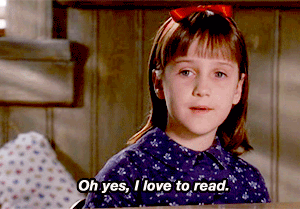
Here's a more detailed breakdown of my reading this year:
Books Read: 178
New Series Started: 14
Old Series Finished: 5
Series Binge Read: 4
Fiction vs. Nonfiction: 156 (88%) vs. 22 (12%)
Authors Read: 133
Rereads: 9
So probably no one but me that cares about these stats, but I like the numbers.
It looks like I started a lot of new series that are going to require more space on my bookshelves in the future, but I also made the executive decision to let myself not finish a series. I hate leaving things unfinished, so I normally would have kept up with a series as long as I didn’t completely hate the first book, but this year, I realized that I have neither the time nor the room to keep that up forever. There are too many books out there that I want to read to stick with ones that I don’t like. I even let myself sell the first books in these series, mostly because I needed the space, but also to avoid the temptation to keep reading the series out of guilt. Like I said, too many books to feel bad.
And there really are a tone of books out there to read; just look at my Goodreads ‘To-Read’ shelf. But I put a pretty good dent in my eternal TBR pile last year, and through the good and the bad, I found myself laughing, frowning, crying, and cringing. Some books were okay, some were disappointing, and some definitely knocked my socks off. Or they would have if I didn’t hate wearing socks so much.
But I digress. My reading last year had its ups and downs, but some books had way more ups and others more downs. Which are which? It took some work to decide, but I finally managed to narrow down the best of the best, the cream of the crop, and the ones at the tippy top. And so, I present to you the 2016 Bookworm Awards, brought to you once again by the brains behind the Literary Laboratory.
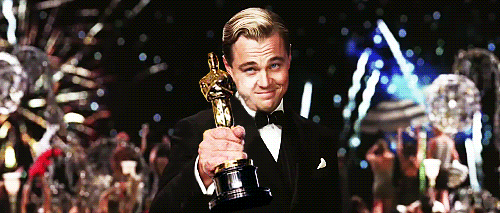
Favorite New Authors: Carrie Firestone and Sarah Porter
These two ladies couldn’t have written more different stories, but they were alike in that neither of them was like anything I’d read before. Carrie’s book was brutally honest and unexpectedly rude, but it was also heartbreaking and hopeful. Sarah wrote a story full of magic and danger with a plucky heroine who was unafraid of doing what needed to be done. To create such fascinating and unique characters and such strangely wonderful situations takes some writers countless tries, but these ladies managed in some of their earliest novels. Brava to both of them!
Favorite New to Me Authors: Erin Morgenstern and Amie Kaufman/Jay Kristoff
I have no idea why I held off on reading the releases from these three. The Night Circus blew me away; it was whimsical and mysterious and dangerous and romantic, and if I could live in Le Cirque des Reves, I would. The Night Circus has fantastically complex characters, but it’s really the world they create that makes this book so great. It’s easily one of my all-time favorites. And both Illuminae and Gemina kept me glued to the pages long after I should’ve gone to bed, gotten back to work, or headed out to run errands. I couldn’t put either of these books down! The format of these stories is one-of-a-kind, and the stories themselves are heart-stopping and action-packed. There were so many plot twists that I didn’t see coming, and I was rooting so hard for the main characters, who were all flawed but skilled, broken but determined, lost yet relentless. I can’t wait for the next book in this series.
Best Beginning of a Series: Illumine (The Illuminae Files #1) by Amie Kaufman and Jay Kristoff
As I just mentioned, The Illuminae Files is one of my favorite series of 2016. Illuminae easily surpassed anything I could’ve expected and had me flying through the pages to see what happened next. The story started off with chaos and never let up, and I loved following Kady, Ezra, and the rest of the survivors of Kerenza as they tried to escape the people who had blown up their home. I really liked Kady in particular. She was smart, skilled, and snarky, and her willingness to put herself in harm’s way to save those she cared about was undeniably admirable. There were so many twists and turns in her quest for safety, and every time I thought I had things pegged, I was proven wrong. Illuminae was an explosive—literally—debut for this award-winning duo, and it quickly earned both authors a place on my TBR pile for their individual books.
Best Ending to a Series: The Raven King (The Raven Cycle #4) by Maggie Stiefvater, Crooked Kingdom (Six of Crows #2) by Leigh Bardugo, Ignite Me (Shatter Me #3) by Tahereh Mafi
In every book series, characters change and grow as they face new situations and new challenges. These three series, though, had more character growth than most. The writing in these series allowed the characters to naturally respond to the changes in their lives, both good and bad, and end up somewhere better than I ever could’ve guessed when I began each series. Each story also had plenty of action, danger, and romance to wrap up the adventures, and the endings managed to be foregone yet still surprising, which, to me, is always a sign that the author has really put work into the finale rather than just giving readers what they want. Not everyone got their happy ending, but everyone got a proper ending, with hints of more stories in the future. I can only hope.
Best Short Story Collection: Stars Above (The Lunar Chronicles) by Marissa Meyer
The Lunar Chronicles is one of my all-time favorite series, and this collection of extra stories about the main characters was everything I’d hoped for and more. The stories provided looks at the pasts of some of the characters, helping show how they became the people I came to know and love, while the final story provided a new adventure for the four couples as they started their lives after the war. Something Old, Something New made me smile so much and made my heart swell with happiness for these characters, and I can’t thank Marissa enough for another chance to peek back into the world of The Lunar Chronicles.
Most Disappointing Book: Stalking Jack the Ripper by Kerri Maniscalco
Ugh, I really wanted to like this book. The cover was beautiful, and the premise of a young woman training to become a forensic pathologist and finding herself on the path of an infamous serial killer sounded great. But this book fell prey to the dangers of insta-love, ridiculous decisions by an intelligent character, and a villain reveal that didn’t make sense. There was very little stalking of Bloody Jack as the title had promised, and to make it worse, the characters were pretty flat, largely predictable, and fairly uninteresting. This is one series I won’t be continuing.
Favorite Classic: Rebecca by Daphne du Maurier
I wrote a whole review on this book last February because it managed to do what few books have done and catch me truly by surprise. The first part of this book makes you think it’s going to be a typical gothic romance with grand, sweeping settings, beautiful but troubled characters, and a dark secret. And this book is that. But then the dark secret is revealed, and it was something I never would’ve guessed. It had me flipping back to reread scenes in a new light and kept me glued to the book until I’d reached the end. This book is a classic for a reason, and I highly recommend it for anyone who’s a fan of a good mystery.
Favorite Non-fiction Read: Ghost Soldiers by Hampton Sides
This book had my emotions all over the place. The topic—the Bataan death march and the Cabanatuan Camp—is one that isn’t widely discussed, but it really should be, as it’s a true story of the best and worst of mankind. I couldn’t believe the optimism, the hope, and the perseverance of the human spirit in such horrific conditions, and it gave me a new respect for the men who endured such cruelty. Ghost Soldiers is truly a heartbreaking yet inspiring story and certainly one I’ll never forget.
Favorite Reread: The Dream Thieves (The Raven Cycle #2) by Maggie Stiefvater
The Raven Cycle is one of my favorite series anyway, and while I love the other three books, The Dream Thieves just feels like a beast of a different sort. I’d forgotten how much I loved to hate Kravinsky, not to mention how legitimately crazy that dude was, but I loved how he messed with the Raven boys and how he antagonized Ronan in particular. This book focused more on Ronan and his abilities as the Greywaren, and it felt less like a mystical mystery and more like a reckless, headfirst race into danger and bad decisions than the rest of the quartet. I was quite pleased to hear that the Ronan-centered series Maggie is working on will be more like The Dream Thieves, because goodness knows I need more of this lovable thug of a boy in my life.
Favorite Retelling: Vassa in the Night by Sarah Porter
I was only vaguely familiar with the original tale of Vasilisa and her magical doll—thanks, random folklore podcast!—and so I wasn’t really sure what to expect from this book. I ended up being pleasantly surprised! The setting of the story was a mix of the familiar and the absurd, the characters were magical and strange, and the story itself was, well, also strange, but also a bit heartbreaking and a bit inspiring. Vassa was such a strong character, and I loved that she managed to save others by being kind; she didn’t require any special powers, other than what Erg provided, to defeat Baba Yaga, which is unusual for most YA books today. And since I wasn’t really sure how the original tale ended, I couldn’t guess how things were going to turn out for Vassa. This is the way modern retellings should be done.
Favorite Contemporary Read: The Loose Ends List by Carrie Firestone
This book wasn’t anything like I expected, and that was a good thing. I expected an interesting story about a girl whose grandmother was dying. What I got was an open, honest, yet rude, funny, and heartbreaking look at death, letting go, and the love of family. I loved Maddie and her reactions to all the crazy things that happened on the cruise, and I loved getting to see the sweet relationship between her and her grandmother. I also loved getting to meet all the other Wishwellians and their families and seeing how all their views of life and death changed as the cruise went on. The cover of this book, although quite cute, doesn’t really do this book justice as it covers such a heavy topic and really makes you consider what you’re doing that makes life worth living.
Scariest Book: Dark Places by Gillian Flynn
Most people know Gillian Flynn through her novel Gone Girl, but I’ve only read her other novels, and Dark Places is easily my favorite. This book was more suspenseful than scary, but it was frightening to uncover the true events of the fateful night that the family of the main character, Libby, was killed. Libby herself was a rather unlikable character, but she’d suffered so much that I still cared about her story. It was interesting to have the POV jumps and the flashbacks to unfold the story and create tension from a number of different angles, and the truth of the murders was actually much more complex and scary than I’d imagined. This book was rather depressing and dark, but it’s worth it to see how Libby changes as she learns more about her family and their deaths.
Funniest Books: Scrappy Little Nobody by Anna Kendrick, The Only Pirate at the Party by Lindsey Stirling, and You’re Never Weird on the Internet (Almost) by Felicia Day
My sense of humor is a bit drier and a bit darker than most, but these three ladies all managed to make me laugh numerous times. Not at them, of course, more at the various situations they’ve found themselves in over the years and the ridiculous ways they reacted to them. (They were laughing, too, so I didn’t feel bad.) It was nice to see that even famous people have awkward moments, whether it’s suffering from foot-in-mouth syndrome or acting like a total fangirl in fronts of someone (else) famous. Aside from being funny, these memoirs showed the dedication and determination of these women to their crafts, and I loved that they were open about both the ups and downs in their lives. It makes me admire them all the more for their willingness to share their mistakes and their hard times and to then remind everyone that it’s okay to ask for help, that there are people out there who love you and want to see you happy. And I feel like these three ladies really show that the bad times don’t last forever and that sometimes laughter really is the best medicine.
Most Unexpected Books: Rebecca by Daphne du Maurier and Illuminae by Amie Kaufman and Jay Kristoff
I know I’ve already talked about both of these a bit, but I want to reiterate that both of these books threw in a huge twist that I absolutely did not see coming. That happens quite rarely for me, and the fact that it happened twice in one year makes me think I’m either losing my awesome literary foresight or authors are getting better at being surprising. Well, Rebecca is far from new, so maybe I’ve just been reading better books. Regardless, even though I’ve told you there are big twists, you should really read these books to find out what they are. I promise you you won’t be disappointed.
Cover Lust: The Night Circus by Erin Morgenstern, The Raven King (The Raven Cycle #4) by Maggie Stiefvater, and The Love That Split the World by Emily Henry
I will freely admit that I’m guilty of occasionally judging a book by its cover, and these books would’ve definitely piqued my interest even if I’d known nothing about them. The covers of these three books are all very different, but they fit their individuals stories so well, managing to portray all the magic inside with a single picture. A cover picture is worth a thousand words, after all.
These say,

“Aren’t

I
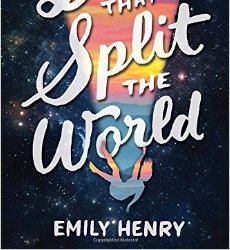
pretty?”
(The answer is yes, yes you are.)
Most Surprising Villain: Tamlin from A Court of Mist and Fury (A Court of Thorns and Roses #2) by Sarah J. Maas
In A Court of Thorns and Roses, I liked Tamlin. He wasn’t perfect, and his unwillingness to stand up to Amarantha to help Feyre irked me, but overall, I thought he was a good match for Feyre, and I was glad they ended up together. Then I got to A Court of Mist and Fury, and all those happy feelings for Tamlin went right out the window. Part of me initially wanted to forgive his actions—he was finally free after so many years, and he was clearly still recovering—but the moment he locked Feyre in the house was the moment I lost all sympathy for him. It’s one thing to want to protect someone you love, but it’s another thing entirely to force them to do what you want because you think you know what’s best for them. And then that ending! Yeah, Tamlin jumped to the top of my naughty list. I loved that Maas was able to flip the tables on Tamlin’s character and show how people can change for the better or for the worse. I kind of liked Tamlin’s road to villainy, in part because it was so unexpected but also because it made room for Rhysand, which I certainly didn’t mind!
Top Five Couples:
Blue and Gansey from The Raven King (The Raven Cycle #4) by Maggie Stiefvater
Feyre and Rhysand from A Court of Mist and Fury (A Court of Thorns and Roses #2) by Sarah J. Maas
Celia and Marco from The Night Circus by Erin Morgenstern
Kaz and Inej from Crooked Kingdom (Six of Crows #2) by Leigh Bardugo
Juliette and Warner from Ignite Me (Shatter Me #3) by Tahereh Mafi
You know how some couples have problems with lying or trusting one another or disapproving families? These couples make those couples look lame by comparison. These five couples were forced to deal with magic, murder, kidnapping, corrupt rulers and governments, major anxiety issues, their own death—you know, simple stuff—and managed to come out even stronger. These guys and gals are all strong and fierce on their own, but together, they prove they can do absolutely anything they set their minds to. Definitely relationship goals, expect maybe with less bloodshed.
And that’s the end!

This was really a whirlwind year for me in terms of reading; I found a number of books that made it onto my all-time favorites list, and I found some others that convinced me to branch out in regards to what genres and topics I’m willing to explore.
So how did those discoveries work out in relation to my reading goals from last year? Well, I met—and surpassed—my initial goal of 100 books. I did manage to read more classics, although I still have plenty to go. And I read at least one non-fiction book each month, and most months, I read more than one. I rediscovered that real life can be just as dramatic and violent and romantic and mysterious as fiction, something that I tend to forget as I’m off exploring all the fictional worlds I can find. Therefore, one of this year’s reading goals is based on my enjoyment of all the nonfiction stories I read last year; yes, once again, I have my reading goals along with my more general resolutions. This year, my goals are to:
1) Read only nonfiction books for an entire month
2) Read at least 160 books
3) Read more classics…again
I’m quite confident that I can successfully meet all these goals—goodness knows I have enough books on my shelves to do so. I’m also quite confident that I’ll once again find some new favorites and some interesting historical events to study up on. There’s a whole year’s worth of reading to explore, and I can’t to see where these stories take me.
I better go get started…
#2016 books#bookwormawards#favorite books#books read in 2016#awards#celebrate reading#reading goals#sarah porter#vassa in the night#erin morgenstern#the night circus#the illuminate files#illuminae#the raven king#the raven cycle#maggie stiefvater#crooked kingdom#six of crows#leigh Bardugo#ghost soliders#hampton sides#blue x gansey#feyre x rhysand#celia x marco#kaz x inej#juliette x warner#warnette#feysand#a court of thorns and roses#sarah j maas
1 note
·
View note